Matador Network's Blog, page 403
October 12, 2022
Rollaboard Carry-On Suitcases That Fit in Even the Smallest Regional Planes

If only flying regional was as satisfying as buying local. Sure, you’re saving money by not going with a major airline, but you’re also getting exactly what you pay for: smaller seats, fewer amenities, and overhead bin space that would challenge even the lightest packers. Not quite as rewarding as the retail equivalent of shopping at boutique stores, and consuming a high-quality product. This is by design. Regional airlines aren’t offering cheap tickets out of the kindness of their hearts – they lure passengers with affordable airfare, then hit you with exorbitant baggage fees once you realize your rollaway can’t fit in their Stuart Little-sized overhead bin. You could play right into their hands and check your bag, or you could invest in luggage that actually fits their restrictive space requirements (typically 18”L x 14”W x 7”D). These are the rollaboard carry-on suitcases that will fit on even the smallest regional planes.
We hope you love the rollaboard carry-on suitcases we recommend! Just so you know, Matador may collect a small commission from the links on this page if you decide to book a stay. Listed prices are accurate as of the time of publication.
Samsonite Solyte DLX Softside[image error] [image error]
Lloyd Christmas famously said in Dumb and Dumber, “Samsonite! I was way off!” Traveling with this Samsonite Solyte suitcase, however, you won’t be way off – you’ll be right on the money. Designed to help you maximize your carry-on capacity while remaining within regional airlines’ size limitations, the Samsonite Solyte is big enough to comfortably store your clothes, a laptop, tables, and toiletry items, without feeling like you need to cram anything into a too-small compartment. There’s also a built-in USB port to make charging your devices as convenient as possible. Fitting in overhead compartments as well underneath the seat in front of you (if need be), the suitcase is the perfect economical option for traveling on a regional airline.
Price: $132.43
Travelpro Maxlite 5 Softside Lightweight Rolling Underseat Compact Carry-On[image error] [image error]
The Travelpro Maxlite is so versatile, it almost packs your belongings for you. It’s equipped with several pockets designed to carry all the essentials, from a padded laptop or tablet sleeve to a removable plastic compartment for cosmetics, accessories, or other supplies – not to mention all the external quick-access pockets – this suitcase is a traveler’s dream. Fitting neatly into overhead bin space on even the smallest airlines, the Travelpro Maxlite is ideal for bringing on quick trips or even longer getaways (for the low-maintenance traveler). It can even be stored snugly under the seat in front of you, if necessary.
Price: $299.99
High Sierra Endeavor Wheeled Underseat Carry-On[image error] [image error]
A spacious bag that fits either under your seat or in your overhead bin, the High Sierra Endeavor has more than enough room for several changes of clothes (including shoes), a toiletry bag, and a laptop or other similar electronic devices. In front, the bag has a zippered pocket that can fit laptops up to 15 inches long, as well as a zippered pocket for iPad or books. There’s also a water bottle pocket, and even a dedicated compartment for shoes. The front pockets are also designed with special protective material, to ensure your belongings (especially electronic devices) stay safe and undamaged during the travel process.
Price: $67.57
Rockland Melrose Upright Wheeled Underseater Carry-On[image error] [image error]
At first glance, this rollaway might look more like a briefcase than a typical piece of carry-on luggage. But that’s the beauty of it. The Rockland Melrose is designed not only to accommodate several days worth of clothing, but also bulkier items like sweatshirts and shoes. There are several zippered pockets and compartments for storing smaller items, as well as interior compartments. You’ll have no problem fitting your tablet and laptop in here, and your water bottle – a travel essential – fits perfectly into a dedicated mesh pocket.
Price: $125
Steve Madden Underseat Wheeled Bag[image error] [image error]
Carry-on luggage isn’t exactly a fashion contest, but the Steve Madden Underseat Wheeled Bag will turn heads as well as economically fit in the overhead bin. Designed with a vintage look, the bag is both elegant and versatile, with zippered pockets on the front, back, and sides, creating plenty of storage space for small items. Larger items can be stored in the interior compartment. Despite its sleek look, the bag is plenty sturdy, made with a durable material that ensures the safety of your belongings. The bag can be used as a rollaway, with its fully extendable handle, or carried by the two grab handles on top (without the usual awkwardness of trying to carry a rolling suitcase). 
Price: $165.99
More like thisTechnology + GearThis Small Backpack Is the Only Travel Pack an Efficient Packer NeedsHow To Have an Indulgent Weekend Getaway in Charleston, South Carolina’s Oldest City
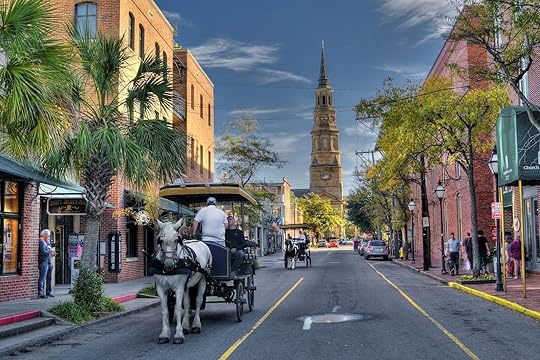
Charleston is a versatile destination — it’s a college town, a historic city, a coastal community, a foodies’ haven, and a great place for a bachelorette party, making it the perfect southern city for just about everyone. No matter the budget, the interests, or the appetite, Charleston delivers — that’s why more than 7 million people visit this beautiful city every year. You can choose to meander the cobblestone streets of South Carolina’s oldest city enjoying everything randomly or you can follow our guide to craft your own itinerary that’ll help make the most of your time in Charleston.
The best times to visit Charleson, South CarolinaHow to get to Charleston, South CarolinaThings to do in Charleston, South CarolinaWhere to eat and drink in Charleston, South CarolinaWhere to stay in Charleston, South CarolinaHow to get around Charleston, South CarolinaThe best times to visit Charleson, South Carolina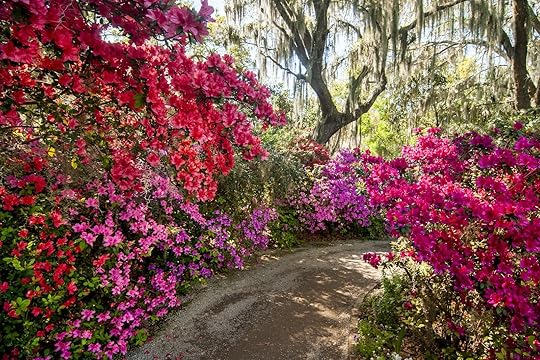
Photo: Jason Barnette
Spring is the best time to visit Charleston. Daytime temperatures reach the 70s by mid-March, and by May, the water temperature is warm enough for a dip in the ocean. The crowds are thinner, so you’ll spend less time sitting in traffic or waiting for a table. The azaleas typically bloom in April, adding bright pinks and reds and purples to an already-vibrant city.
Alternative times to visit Charleston would be mid-week during the summer or October while many people are away exploring the fall colors in the mountains.
How to get to Charleston, South CarolinaCharleston is an easy place to visit — you just need to choose between flying, driving, or riding a train.
Charleston International Airport (CHS) offers flights from almost a dozen airlines, including American, Delta, JetBlue, Southwest, and United. From the airport, you can rent a car, schedule a shuttle with your hotel (most downtown hotels offer complimentary shuttles to the airport), or take the Charleston Area Regional Transit Authority (CARTA) bus.The 306-mile Interstate 26 ends in Charleston after crossing through South Carolina, North Carolina, and Tennessee. The interstate intersects with major highways like I-95, I-77, I-85, and I-81. King Street and East Bay Streets are the primary north-south routes through downtown, while Calhoun Street and Broad Street are the primary east-west.Amtrak offers services to Charleston along their Silver Service/Palmetto line. Trains operating on the line between New York and Miami have sleeper cars, dining cars, and comfortable seating for short trips.Expert tip: If you’re driving your car to Charleston, be mindful of where you park. Neighborhoods are typically reserved for residents only. As a rule of thumb, you probably can’t park on that street if you don’t see a parking meter. The best parking rates in the city are found in the public parking garages.
Things to do in Charleston, South CarolinaFor the history lovers: Visit the museums and historical landmarks of Charleston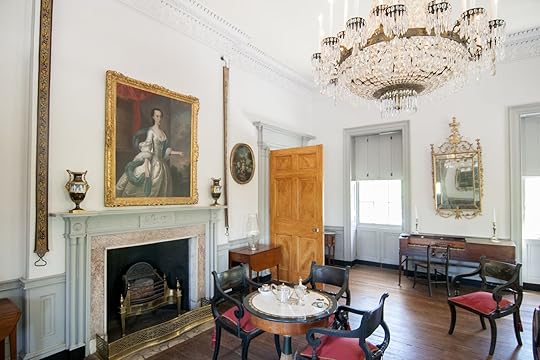
The Joseph-Manigault House, one of the Charleston Museum’s house museums. Photo: Jason Barnette
The Charleston Museum: Established in 1773, the Charleston Museum is the oldest museum in the United States. Take a walk through Charleston’s early history at the Lowcountry History Hall, check out 17th to 20th-century rifles and pistols at The Armory, learn about the city’s role in the American Revolution, and study the museum’s recently renovated exhibit about the Civil War. In the Bunting Natural History Gallery, learn about millions of years of natural history and snap a selfie with the giant fossilized sloth.
Don’t miss a chance to tour the Joseph Manigault House, one of the museum’s historic houses open for guided tours. Built in 1803 for a wealthy plantation family, the house has a stunning spiral staircase, historically restored rooms, and an impressive collection of 19th-century furniture.
Expert tip: The museum also manages the Heyward-Washington House several blocks away. The 3-Site Ticket grants admission to the museum and both historic houses. But with no expiration date, you can visit each at your leisure.
Parking: Use the Visitor Center Parking Garage across the street from the museum.
Where: 360 Meeting Street Charleston, SC 29403
Fort Sumter & Fort Moultrie National Historical Park: Inside the Fort Sumter Visitor Center are exhibits about Charleston’s role in the Civil War. Hop aboard the three-level tour boat for an exhilarating adventure to Fort Sumter at the entrance to Charleston Harbor. The thirty-minute boat ride features history narration and spectacular views. Once docked at the fort, visitors are treated to a 15-minute introduction from a National Park Service ranger and then left with half an hour to explore at will.
Expert tip: Fort Moultrie is another component of this national park site in nearby Sullivan’s Island. The visitor center interprets the Revolutionary War and Battle of Sullivan’s Island, the fort’s role in the Civil War, and its role during WWII.
Parking: Use the Aquarium Parking Garage across the street from the visitor center.
Where: 340 Concord St, Charleston, SC 29401
For the nature lovers: Check out Charleston’s aquarium and gardens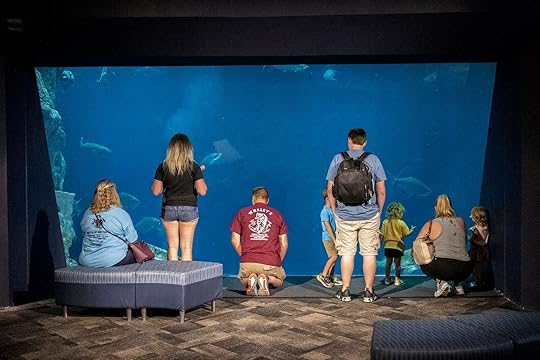
Photo: Jason Barnette
The South Carolina Aquarium: Appropriately located on the waterfront, the South Carolina Aquarium is a fascinating exploration of the state’s aquatic life. The two-story, 385,000-gallon Great Ocean Tank takes center stage and it’s the deepest saltwater tank in the country. Step outside to the Saltwater Aviary and get hands-on with the touch tanks.
Parking: Use the Aquarium Parking Garage across the street from the aquarium.
Where: 100 Aquarium Wharf, Charleston, SC 29401
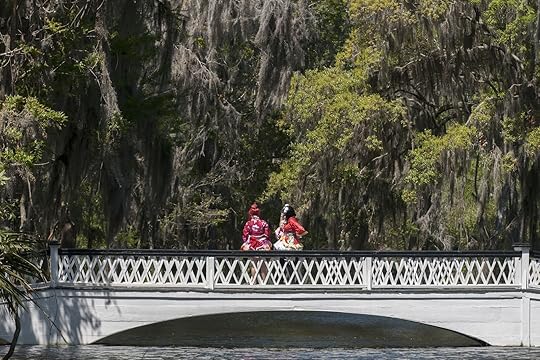
Photo: Jason Barnette
Magnolia Plantation and Gardens: In 1676, Thomas Drayton established a plantation on the Ashley River. After the collapse of the plantation economy, the private gardens carefully curated by the Drayton family were opened to the public in 1870 — making it one of the oldest botanical gardens in the country.
Admission includes trails crisscrossing through romantic gardens of azalea bushes, oak trees, and the iconic White Bridge. Other activities include (at an additional cost) a guided tour of the house, access to the swamp gardens, and the Slavery to Freedom Tour that explores the history of enslaved people who lived and worked on the plantation.
Expert tip: Book a narrated tour on the Nature Tram to get the most out of your visit. During the one-hour tour, you’ll visit the gardens, swamps, and scenic vistas of the plantation from the comfort of an open-air trolley car.
Parking: There is plenty of on-site parking.
Where: 3550 Ashley River Rd, Charleston, SC 29414
For the art aficionados: Hit the Gibbes Museum of Art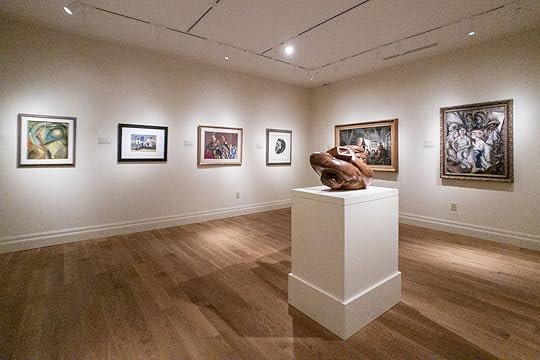
Photo: Jason Barnette
The Gibbes Museum of Art has an impressive collection of 18th and 19th-century paintings, sculptures, and furniture, as well as contemporary artwork, spread throughout three galleries. The Miniature Portraits Gallery is the museum’s signature showcase, displaying dozens of intricate palm-sized portraits – a trend that started in Charleston over two hundred years ago. But while enjoying the exhibits at will, be sure to take note of the gorgeous architecture of the building itself. Adult tickets are $12.
Parking: Use the Queen Street Garage or Cumberland Street Garage, each just one block from the art museum.
Where: 135 Meeting St, Charleston, SC 29401
For those in need of retail therapy: Walk around the Historic Charleston City MarketContrary to popular belief, enslaved people were never sold at the city market. Opened in 1807, it was the central market where residents bought daily supplies. Today, the city market has dozens of shops filled with local artwork — photography, paintings, clothing, home decor, jewelry, and sweet grass baskets. Far from typical tourist trap souvenir shops, the Historic Charleston City Market is a place to meet local artisans and find something authentic to take home.
Parking: Use the Cumberland Street Parking Garage one block from the city market.
Where: 188 Meeting St, Charleston, SC 29401
For the romantics: Take a sunset cruiseA sunset cruise on the Schooner Pride is a unique way to spend an evening in Charleston. The 84-foot, three-mast schooner takes passengers on a peaceful two-hour journey around Charleston Harbor. It’s a chance to relax, take in the sight of the city’s skyline, and enjoy occasional dolphin sightings. The tour does not feature narration or food, however, the friendly crew will answer questions, and visitors can bring a picnic.
Parking: The Schooner Pride sets sail from a dock beside the South Carolina Aquarium. Use the Aquarium Parking Garage one block away.
Where: 360 Concord St, Charleston, SC 29401
Where to eat and drink in Charleston, South CarolinaFor those who want to try everything: the Charleston Culinary ToursThe best way to discover your personal favorite Charleston restaurant is with a guided culinary tour. These three-hour tours stop at about half a dozen restaurants and each visit includes a sample of the menu. When you’re done, you’ll be well-fed and armed with a list of restaurants to visit during the remainder of your trip.
For southern food: biscuits, seafood, and barbecueCallie’s Hot Little Biscuits: In 2005, Carrie Morey started an Instagram page in order to sell her buttery, tender, made-from-scratch biscuits. The popularity of the delectable southern staple soon led to a food truck and brick-and-mortar locations in the Historic Charleston City Market and King Street. It’s common to see long lines stretching down the sidewalk in the mornings — and it’s worth the wait.
Parking: Use the Cumberland Street Garage one block from the city market.
Where: 188 Meeting St, Charleston, SC 29401 (Enclosed building at Historic Charleston City Market)
Poogan’s Porch: When Poogan’s Porch opened in 1976 inside a nearly one-hundred-year-old house, the first guest was the neighborhood dog named Poogan, who settled onto the porch for a nap, hence the name of the establishment. At Poogan’s Porch, chef Daniel Doyle takes a contemporary approach to southern dishes like she-crab soup, shrimp and grits, and fried chicken.
Parking: Use the Queen Street Garage within sight of the restaurant.
Where: 72 Queen St, Charleston, SC 29401
Poogan’s Smokehouse: In 2016, Doyle branched out with his take on southern-style barbecue. Meats are smoked daily, and everything is made from scratch in the state-of-the-art kitchen. The menu includes pulled pork or chicken sandwiches, smokehouse ribs and slaw, and homemade sides. Their Skillet Mac & Cheese appetizer — topped with country ham, smoked gouda, and toasted breadcrumbs — could serve as a meal.
Parking: Use the Concord Parking Garage, less than a block from the restaurant.
Where: 188 E Bay St, Charleston, SC 29401
Fleet Landing: In 2004, Tradd and Weesie Newton converted a 1940s naval building on a concrete pier into one of Charleston’s best waterfront restaurants. Ample outdoor seating and oversized windows offer stunning views of Charleston Harbor to go with the savory food. Specialties include shrimp and grits, crab cakes, and seafood pasta. But the best way to experience their signature style is with a fried seafood platter.
Parking: Use the Concord Street Parking Garage across the street from the restaurant.
Where: 186 Concord St, Charleston, SC 29401
For spirits and craft cocktails
Photo: Jason Barnette
Firefly Distillery: In 2005, Jim Irvin and Scott Newitt came up with the crazy idea of establishing a distillery in South Carolina’s Lowcountry. Hearkening back to their childhood of catching fireflies and stuffing them into Mason jars, they named their fledgling business Firefly Distillery. Their signature Sweet Tea Vodka was an instant hit.
In 2020, Firefly Distillery moved to a sprawling campus in North Charleston. Guided tours offer a sneak peek into the distillery and ends in the gorgeous tasting room. After the tour, visitors are treated to six samples of their products — with the option to buy craft cocktails to finish the day. Live music is often played on the weekends across the grassy yard in front of the tasting room.
Expert tip: The Firefly Distillery is only five minutes from North Charleston’s Park Circle, a neighborhood filled with local restaurants, breweries, and retail shops. It’s a great place to get something to eat before heading back to Charleston.
Parking: There is plenty of free on-site parking.
Where: 4201 Spruill Ave, North Charleston, SC 29405
The Rooftop at the Vendue: The best way to enjoy the Charleston skyline is from the water. But the second-best way is The Rooftop at the Vendue, the city’s best rooftop bar. The towering steeples of St. Philip’s and St. Michael’s are perfect backdrops to conversations around craft cocktails.
Parking: Use the East Bay Street Parking Garage or Concord Parking Garage, each one block away from the rooftop bar.Where: 19 Vendue Range, Charleston, SC 29401
Where to stay in Charleston, South CarolinaWe hope you love the Charleston hotels we recommend! Just so you know, Matador may collect a small commission from the links on this page if you decide to book a stay. Listed prices are accurate as of the time of publication.
For the budget-conscious travelersBest Western: Across the Ravenel Bridge in Mount Pleasant, this hotel has free on-site parking, an outdoor swimming pool, and complimentary continental breakfast. It’s a 15-minute drive from downtown Charleston – and only five minutes from dining and recreation at Shem Creek.
Parking: There is plenty of free on-site parking.
Where: 259 Magrath Darby Blvd, Mt Pleasant, SC 29464
Sleep Inn: On the other side of Johnnie Dodds Boulevard – the main thoroughfare in Mount Pleasant – this hotel is a peaceful escape with an outdoor swimming pool and free on-site parking.
Parking: There is plenty of free on-site parking.
Where: 299 Wingo Way, Mt Pleasant, SC 29464
Hilton Garden Inn: This hotel is an impeccable place to spend your night recovering from a long day of visiting the city. The hotel has an on-site bar and restaurant, an outdoor swimming pool, and an outdoor terrace with fire pits.
Parking: There is plenty of free on-site parking.
Where: 300 Wingo Way, Mt Pleasant, SC 29464
For travelers in search of luxuryFrancis Marion Hotel: When completed in the early 1920s, it was one of the grandest hotels in the Carolinas. Named after Revolutionary War hero General Francis Marion, the hotel has a glamorous decor, an on-site spa, restaurant, bar, and a convenient location in the heart of downtown Charleston.
Parking: Use the Marion Square Parking Garage next door.
Where: 387 King St, Charleston, SC 29403
French Quarter Inn: Considering price, location, and amenities, the French Quarter Inn is one of the best hotels in Charleston. Located beside the Historic Charleston City Market, the hotel has guest rooms with gorgeous furniture, upscale decor, and stunning views of the city.
Parking: On-site valet parking is available for an additional charge. Their parking garage has electric vehicle charging stations.
Where: 166 Church St, Charleston, SC 29401
The Charleston Place: Located near the Historic Charleston City Market, this hotel is one of the largest complexes in the city. There are three on-site restaurants, four bars, and a full-service day spa. The rooftop Clocktower Terrace overlooking King Street is only available for guests.
Parking: On-site valet parking is available for an additional charge. Their parking garage has electric vehicle charging stations.
Where: 205 Meeting St, Charleston, SC 29401
The Dewberry Inn: This modern boutique hotel is conveniently located beside Marion Square in the heart of downtown Charleston. The hotel has an on-site restaurant and bar.
Parking: On-site valet parking is available for an additional charge. Their parking garage features electric vehicle charging stations.
Where: 334 Meeting St, Charleston, SC 29403
How to get around Charleston, South Carolina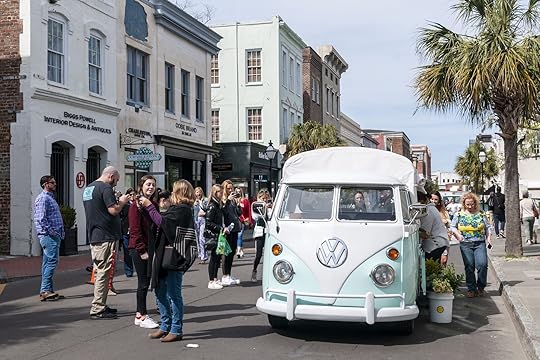
Photo: Jason Barnette
Getting around Charleston is more complicated than getting there. Downtown streets are narrow — after all, many of them were designed for horse-drawn carriages in the 1700s. The best way to get around Charleston is to park your car and use one of the following options:
CARTA operates the Downtown Area Shuttle (DASH), a free public transportation bus connecting many of the top attractions in the city. The air-conditioned buses have comfortable seats, charging stations, and short transits between stops.The most interesting way to get around is the Charleston Bike Taxi. Two-seater open-air carts driven by a bicyclist offer a quick and affordable way to get between destinations while enjoying the best sights of the city.Walking is a great way to get around Charleston, but it has a few caveats. Cobblestone streets and uneven sidewalks make walking feel like an Olympic event. If you have mobility issues, you may want to go for another mode of transportation. More like thisEpic Stays12 Airbnbs in Charleston for a Bachelorette Party Filled With Southern Charm
More like thisEpic Stays12 Airbnbs in Charleston for a Bachelorette Party Filled With Southern Charm
11 Baltimore Airbnb Rentals in the Inner Harbor, Downtown, and Fells Point
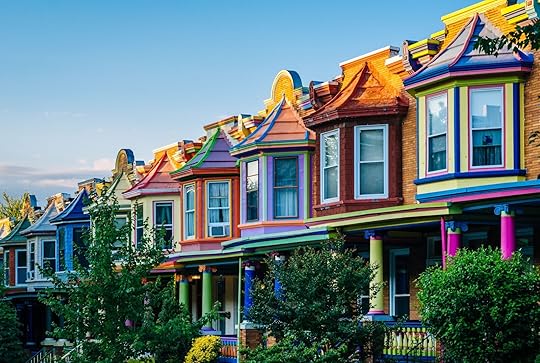
Pulling together marine history with modern art and arguably one of the best aquariums in the country, Baltimore is an easy choice for a city break. In between touring the sights and roaming such neighborhoods as Fells Point and Federal Hill, the restaurants of Little Italy will keep your stamina up. Settle into a luxurious Airbnb in Baltimore from this list while you explore the best of the city.
Traveling in Maryland? Check out Matador’s guide to Ocean City Airbnbs
We hope you love the Airbnb Baltimore vacation rentals we recommend! Just so you know, Matador may collect a small commission from the links on this page if you decide to book a stay. Listed prices are accurate as of the time of publication.
Airbnbs in Baltimore Inner HarborDowntown Baltimore AirbnbsFells Point Baltimore AirbnbsSouth and East Baltimore AirbnbsAirbnbs in Baltimore Inner HarborTwo minutes from Inner Harbor with Smart TV and a full kitchen
Photo: Airbnb
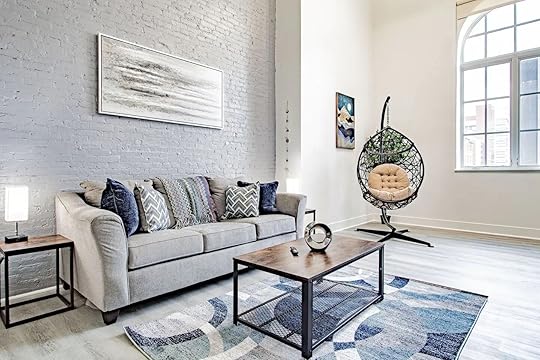
Photo: Airbnb
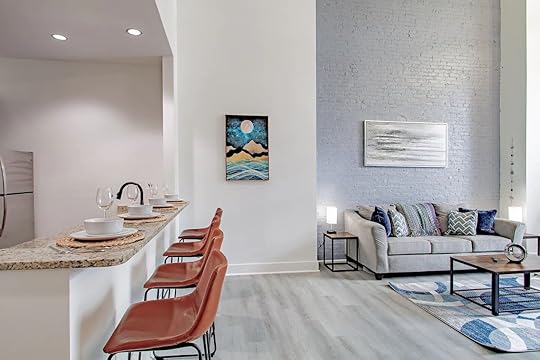
Photo: Airbnb
This stylish Airbnb in Baltimore’s Inner Harbor is suitable for a long-term stay. Stylishly tuned-out, the open-concept living room features high ceilings, a hanging egg chair, and boutique pieces of art. Although compact, the kitchen is considerably well equipped with a snazzy breakfast bar for sipping morning coffee. In addition to the main bedroom, an additional pair of guests can bunk on the sofa bed.
Four guests, one bedroom
Price: $141 per night
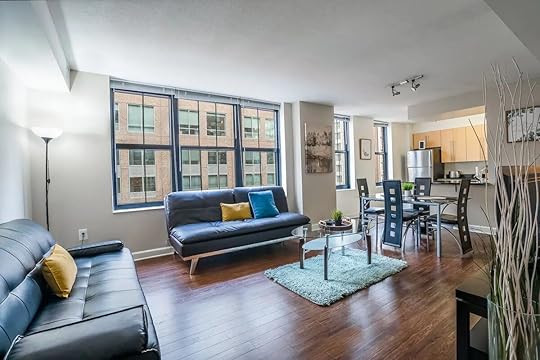
Photo: Airbnb
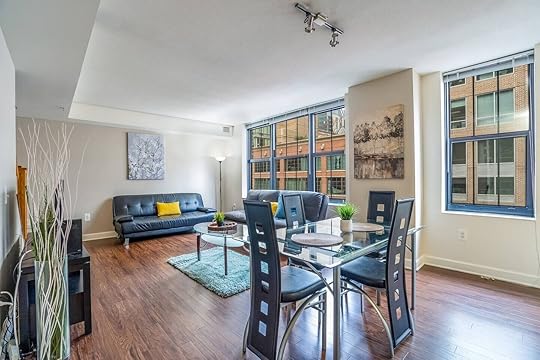
Photo: Airbnb
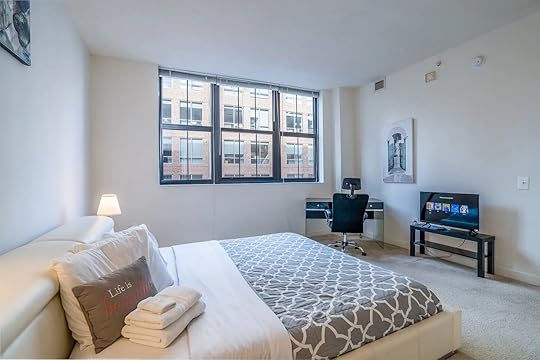
Photo: Airbnb
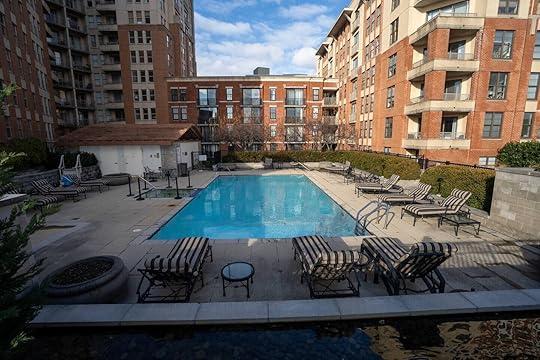
Photo: Airbnb
Pets are welcome at this contemporary Baltimore Airbnb with a pool. Furnished with all the necessary appliances to feel at home, this flat includes a coffee maker to power you up for a day of sightseeing. Having the bedrooms and bathrooms on a separate floor gives the duplex a wonderful sense of space. In addition to the communal rooftop pool (seasonal), the complex features a fitness suite and hot tub that you’ll have free access to while in residence.
Five guests, two bedrooms
Price: $268 per night
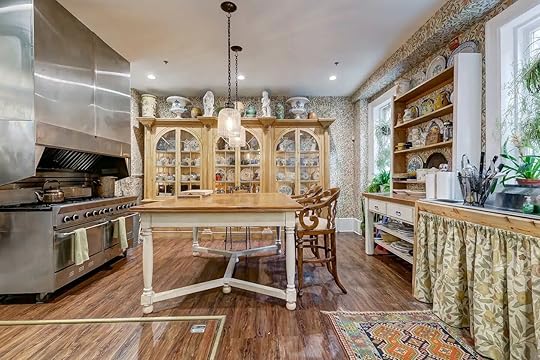
Photo: Airbnb
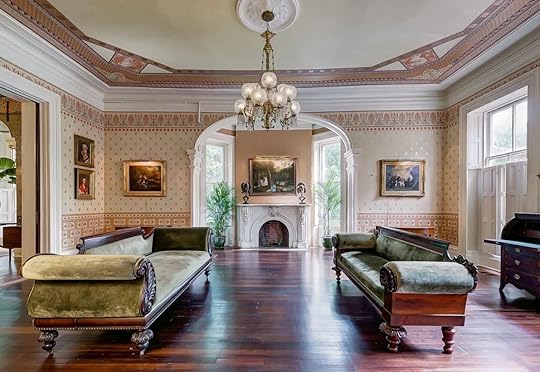
Photo: Airbnb
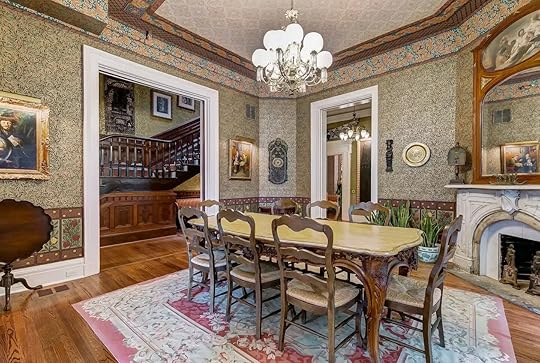
Photo: Airbnb
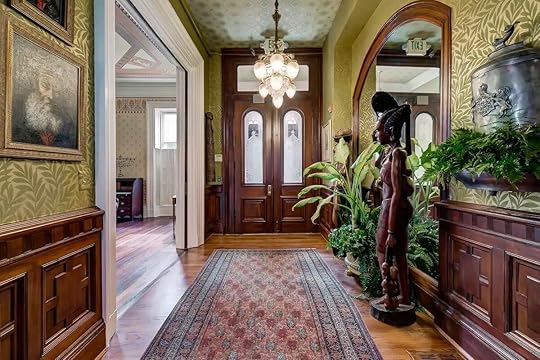
Photo: Airbnb
Is it a museum, or is it a mansion? This luxury Airbnb in Baltimore is both! Spanning a whopping 10,000 square feet, this 1850s property was carefully restored without sacrificing the original fireplaces, staircase, and stained glass windows. Nine bedrooms are furnished with antiques and affixed to a private bathing suite. Period chandeliers and oil paintings enhance the character while the courtyard and arboretum are a delight on a crisp morning.
Fourteen guests, nine bedrooms
Price: $1,500 per night
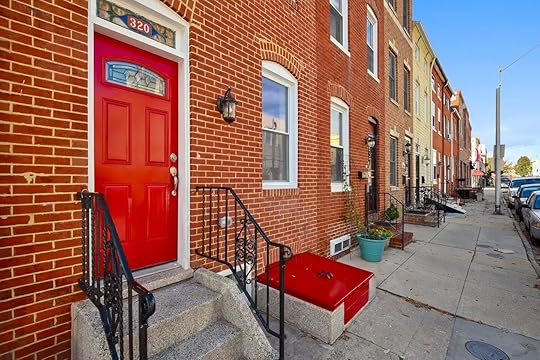
Photo: Airbnb
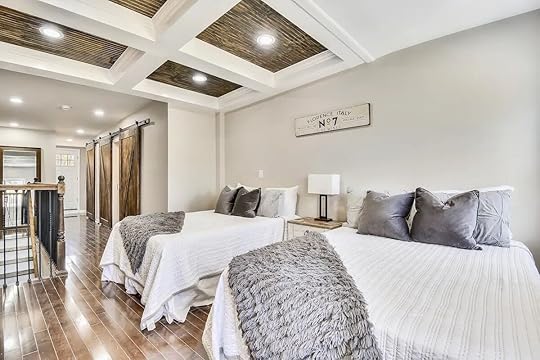
Photo: Airbnb
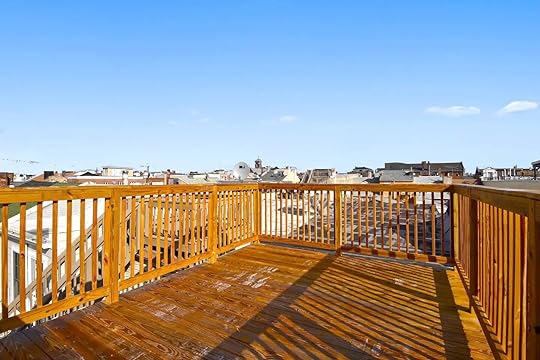
Photo: Airbnb
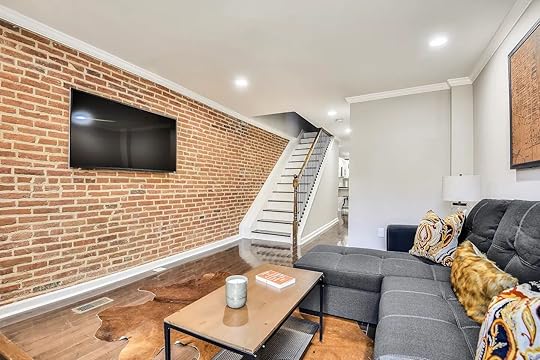
Photo: Airbnb
If you’re heading into town for a culinary getaway, this downtown Baltimore Airbnb in Little Italy will more than satisfy your tastebuds. The red brick townhouse spans four stories and culminates in a rooftop deck, awesome for morning yoga and a spot of sunbathing. Minimalist interiors are accented with Baltimore and Italy-inspired art. Parking is available but you’ll not need to drive if you stay in this location.
Ten guests, four bedrooms
Price: $399 per night

Photo: Airbnb

Photo: Airbnb

Photo: Airbnb

Photo: Airbnb
Perfect for larger groups, this 200-year-old Airbnb in downtown Baltimore is lavishly appointed with a grand parlor and banquet hall. In fact, take a closer look and you might recognize certain rooms from the Netflix series, The House of Cards. While the foundations nod to the building’s history and the atrium remains open. The mansion has been upgraded with modern bathrooms and a state-of-the-art kitchen.
Sixteen guests, ten bedrooms
Price: $1,240 per night
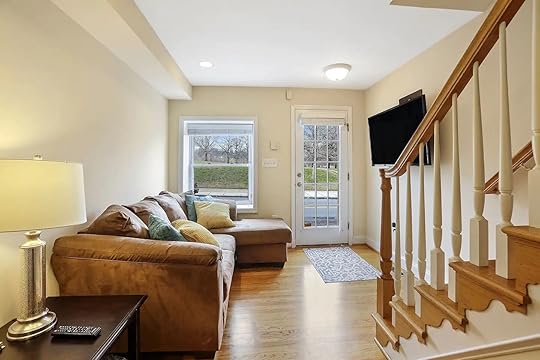
Photo: Airbnb
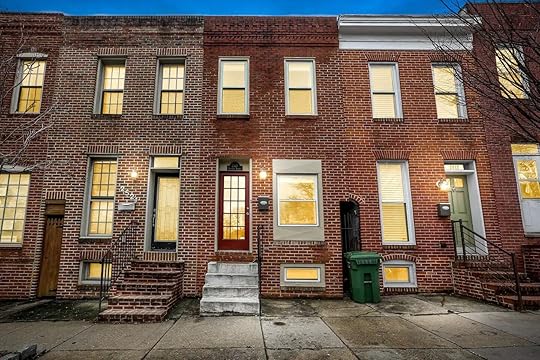
Photo: Airbnb
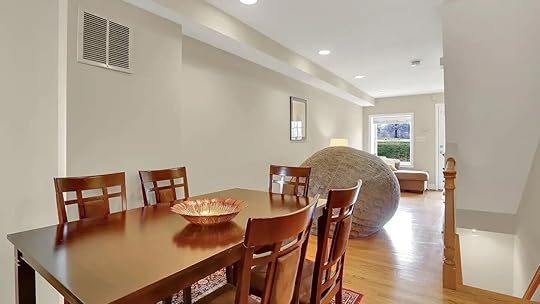
Photo: Airbnb
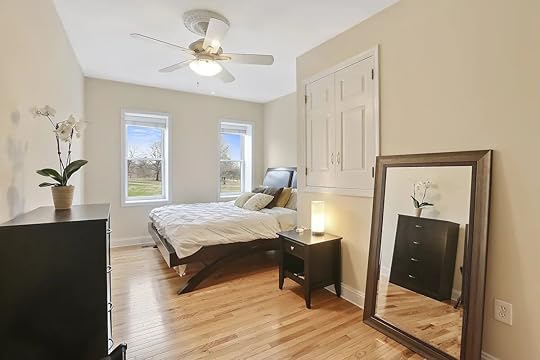
Photo: Airbnb
Located on the boundary of Fells Point and family-oriented Canton, this Baltimore Airbnb with a Jacuzzi is on the doorstep of Patterson Park. Housed within one of the archetypal terraces homes, this residence opens out onto a “surprise” private yard where a hot tub has been added. For even more comfort, leap onto the LoveSac and unwind with a movie night.
Ten guests, two bedrooms
Price: $247 per night
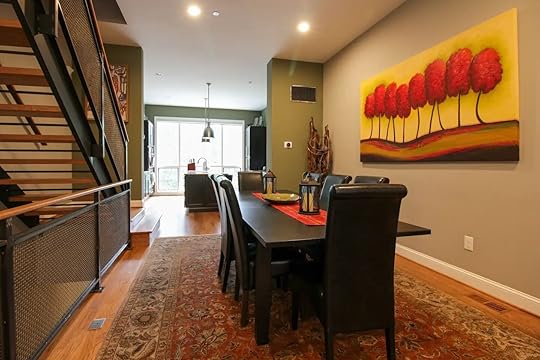
Photo: Airbnb
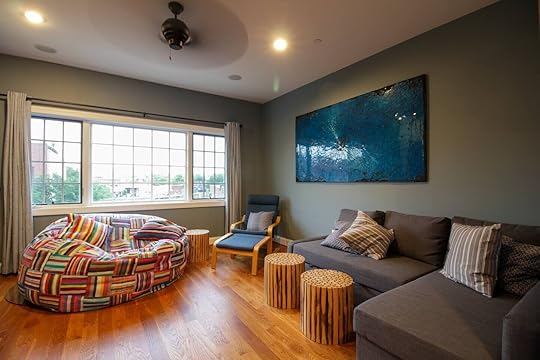
Photo: Airbnb
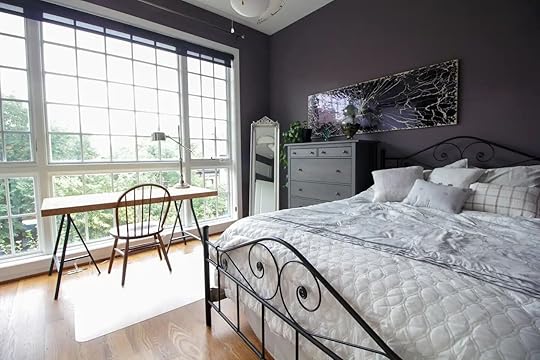
Photo: Airbnb
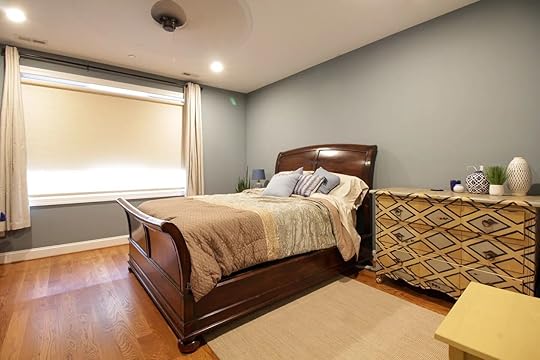
Photo: Airbnb
Dogs are welcome at this luxury Airbnb in Baltimore with a deeply artistic spirit. Floor-to-ceiling windows throughout the property enable natural light to circulate and add a sense of lightness. The open-concept lounge opens out onto one patio while the larger roof deck is fitted with dining tables and a grill. Access to this space is via the art studio on the top floor.
Six guests, three bedrooms
Price: $692 per night
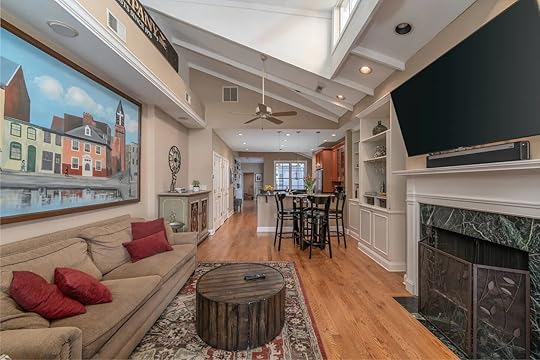
Photo: Airbnb
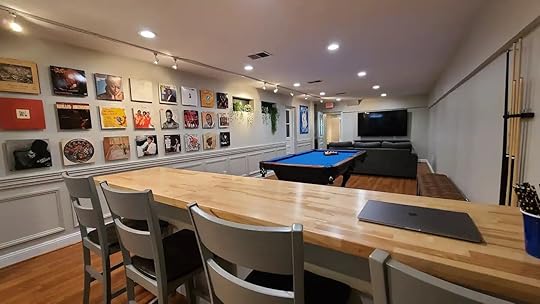
Photo: Airbnb
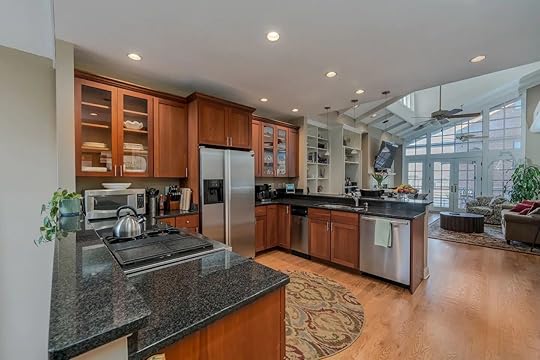
Photo: Airbnb
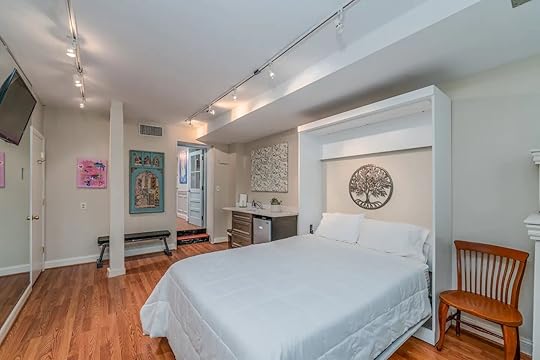
Photo: Airbnb
This airy pet-friendly Baltimore Airbnb features vaulted ceilings and two patios, one of which grants a view of the Patapsco River. A cobalt blue dining room functions as a conference room and is dressed with kooky pieces of art depicting Baltimore attractions. Elsewhere, you’ll find bedrooms overlooking Historic Thames Street, a library, and a games room.
Ten guests, four bedrooms
Price: $694 per night

Photo: Airbnb

Photo: Airbnb
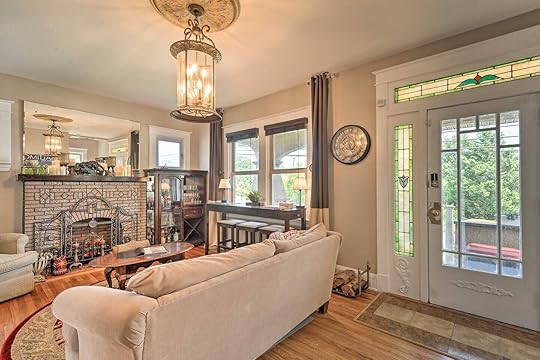
Photo: Airbnb
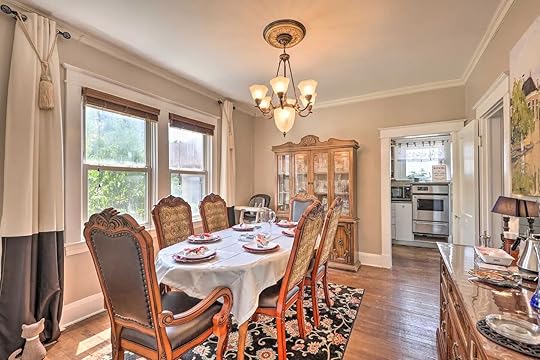
Photo: Airbnb
Situated in Colgate, east of downtown, this three-bedroom detached property presents two floors of stylish and comfortable living. Meanwhile, the basement has been transformed into a cracking games room that doubles up as a remote workspace during the day. In addition to the yard, this Airbnb in Baltimore with a pool features an elevated sun deck complete with a hot tub.
Six guests, three bedrooms
Price: $193 per night
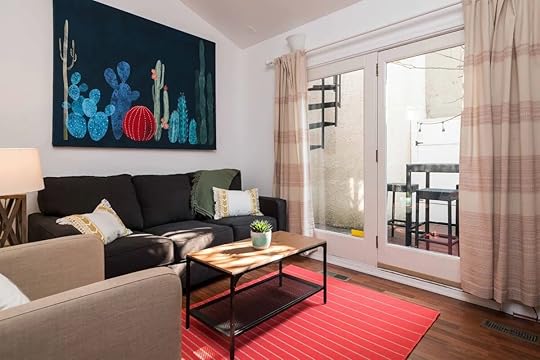
Photo: Airbnb

Photo: Airbnb
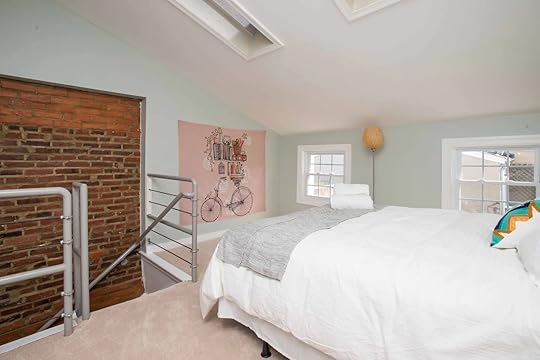
Photo: Airbnb
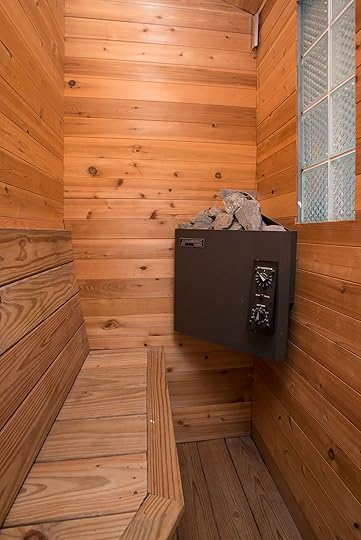
Photo: Airbnb
This luxury Airbnb in Baltimore nails the urban lifestyle with a Swedish sauna, Jacuzzi bathtub, and patio. The entire complex is beautifully decorated with upbeat canvasses and a delicate color palette. A cute breakfast nook is positioned by the fireplace for chiller mornings. Step outside and you can take your pick from cafes in the Federal Hill Historic District.
Six guests, two bedrooms
Price: $204 per night
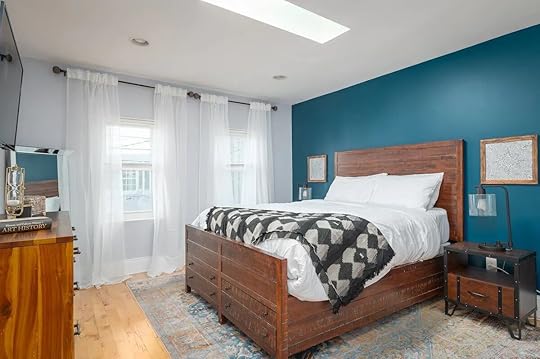
Photo: Airbnb

Photo: Airbnb
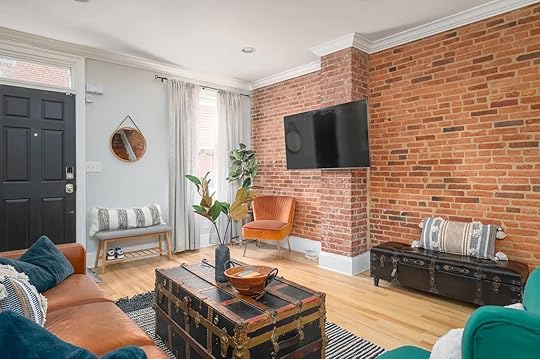
Photo: Airbnb
Sink into this Baltimore Airbnb with a Jacuzzi in the bathroom after a day of exploration and you’ll emerge feeling refreshed and rejuvenated. Occupying the end of a row of bohemian terraces, the lounge features exposed brick dating back to the early 20th century. A quaint sundeck rests atop the two-story home and is set up with seating for an al fresco cocktail before supper. 
Six guests, three bedrooms
Price: $205 per night
October 11, 2022
This Is the Best Women’s Hiking Backpack on the Market, and It’s $32 Off Right Now

Investing in outdoor gear is the ultimate balance — you need something that is built to last but won’t break the bank. Add in the variabilities of fit, versatility, weight, and sustainable production, and you get a stressful day of shopping. As someone who has hiked, climbed, and skied around the world, I’ve become picky when it comes to what equipment I’m using.
After all, hiking through Switzerland and skiing in Japan means I’m lugging my belongings on planes, trains, and automobiles. 20+ open internet tabs, stress, and the fear of buyer’s remorse were the only results I yielded when searching for a new daypack. Then, like a rainbow in the storm, I got my hands on the Deuter Trail 28 pack, and my search (and stress) were over. From versatility to comfort, the Deuter Trail 28 SL Women’s Pack is my new go-to for almost every adventure, and I think it’ll be yours too.
We hope you love the Deuter Trail 28 SL Women’s pack! Just so you know, Matador may collect a small commission from the links on this page if you decide to book a stay. Listed prices are accurate as of the time of publication.
The Fit is Next LevelOne of my favorite features of the Trail 28 is that it’s offered in Deuter’s SL (or Slimline) fit. The SL is a women’s specific design with a shorter back length and a narrower shape, meaning that it’s crafted for a smaller frame. Believe it or not, my body shape is not the same as many of my guy counterparts, and the moment I put this pack on showed me the comfort I was missing with unisex options.
When I think of luxury, daypacks do not come to mind. That said, a variety of adjustable straps, incredible back padding, and other features that Deuter has evolved over years of backpack development make me forget I even have the Trail 28 on. Two air contact pads distribute pack load evenly and magically perform a pump effect that ventilates air when you move— it results in 15% less perspiration. The trapezoid-shaped lumbar pad means what you’re carrying is spread evenly, while adjustable load straps and pull-forward construction get your pack to fit perfectly regardless of what you bring on your next adventure.
The Deuter Trail 28 has Features Galore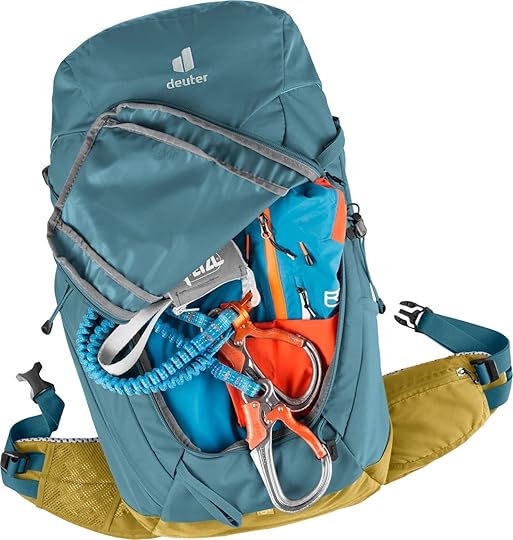
Photo: Deuter
Though hiking is the Trail 28 Packs bread-and-butter, the features make this a perfect all-around pack for your gear quiver.
I love the Trail 28 for casual day hiking, but its unique back system (which helps keep pack weight closer to your body resulting in less shifting), helmet loops, various carabiner attachment points, and pole holders make this pack a favorite for more technical hikes and adventures including everything from multi-pitch climbs to via ferratas. For those technical hikes, a few of my other gear favorites include these Superfeet Trailblazer Insoles and this Ortovox Jacket.
If you’re anything like me, you meticulously pack for your adventure, but it quickly becomes a muddled pit of chaos the moment you need a water bottle stuck at the bottom of your pack (classic). Well, lucky for us, the Trail 28 pack comes with a huge front zipper that allows you access to the interior of your pack— which makes digging around from the top a thing of the past.
Additionally, in the name of organization, a side pocket that perfectly fits your Nalgene means you’ll always be hydrated and a hip-belt pocket perfect for sunscreen storage means you won’t have an excuse the next time you get sunburned.
Think the features are over? Not so fast. Another honorable mention of the Deuter Trail 28 Pack is the removable rain cover which makes hitting the trail always a possibility, regardless of rain. A 3.0L compatible hydration pouch as well as an inner compartment for important items like a wallet and keys round out just a few more reasons why this pack is perfect for any adventure.
We mean any adventure, really.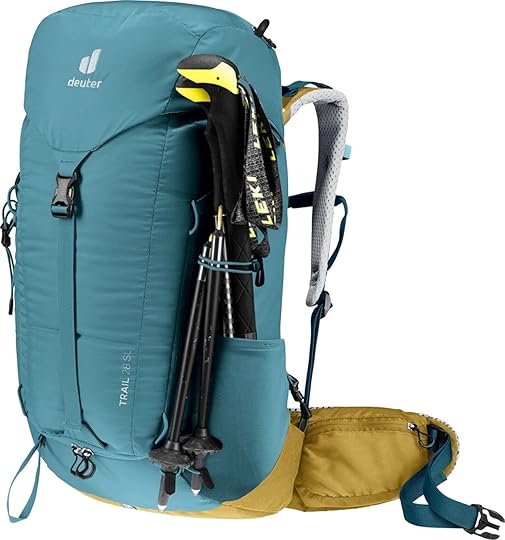
Photo: Deuter
To add yet another use to the mix, the Trail 28 has ideal features for traveling. Though the hydration sleeve is made for a bladder, my laptop fits perfectly and is cushioned by the back padding. The top compartment and side pockets hold everything I need easy access to, and everything else I’ve decided to carry on the plane fits perfectly in the main compartment. The Aircontact pads, which are in a breathable hollow-chamber foam, keep me from sweating while running through the airport to catch my connecting flight (because let’s be honest, it always happens).
Sustainable ProductionI love to support brands that utilize methods of sustainable production. In addition to following the bluesign® standard, which is the strictest environmental standard for textile production worldwide, Deuter uses certified down and feathers, and also produces their products without the use of PFC (substances that are harmful to the environment but are often used for their water-repellent properties in the outdoor sector). To go a step further, Deuter promises to repair any Deuter pack free of charge. Fewer packs in the landfill and more on the trails? Yes, please.
If I were writing a high school paper, I’d say “In conclusion, the versatility, comfort, and features are the reason I love the Deuter Trail 28 Pack.” Don’t get me wrong, those are some of the reasons I love this pack. I can’t say in conclusion however, because this pack story hasn’t concluded yet— I find new reasons to love the Deuter 28 every time I hit the trail.
Witches, History, and Craft Beer: How To Make the Most of a Day Trip To Salem, Massachusetts
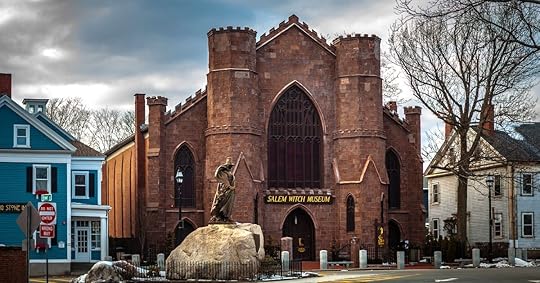
If you were asked to name just one town in the United States that’s associated with magic, there’s a good chance that Salem, Massachusetts, comes to mind. The town of about 43,000 people is well known for the Salem witch trials and a turbulent history dating back to 1626 when the town was founded. Today, it’s become a tourism destination — especially in October around Halloween and for people looking for a day trip from Boston. There are many things to do in Salem for every type of traveler, whether you’re a history buff, interested in modern magic, or just want to take a small-town escape in the Northeast.
The best things to do in Salem, MassachusettsVisit the Salem Witch Trials Memorial and witch museumsThe memorial is located at the end of Charter Street, in a small park surrounded by trees. This single stone sculpture of two witches on broomsticks has an inscription that reads, “In memory of those who suffered due to false accusations of witchcraft.” It honors the 20 people who were put on bogus trial and killed in 1692. A bench for each victim has the name, how they were executed, and the exact date of their death along with direct quotes from court transcripts.
Unsurprisingly, there’s no shortage of witch-themed museums to visit in Salem. At the Witch History Museum, a live presentation kicks of tours of the forest and Old Salem village. The Salem Witch Museum has historical presentations about the trials and the modern day witch.
Live what life was like in 1630While going back in time to actually live in 1630 would be disastrous, it’s a different story when you get to stop by Pioneer Village to just see what life was like back then. Pioneer Village is the oldest living history museum in the US, and you can chat with staff and living history actors on self-guided tours.
Go to the Witch House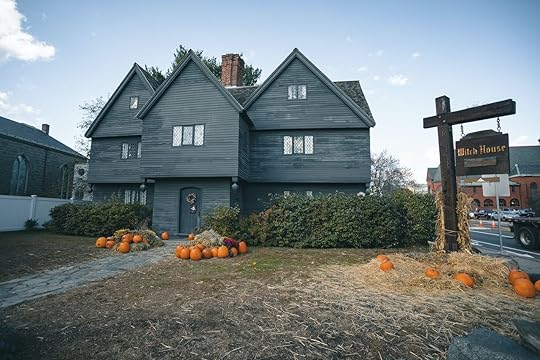
Photo: Georgios Antonatos/Shutterstock
Though history is everywhere you look in Salem, only one has direct ties to the infamous witch trials: the Witch House, owned in the 17th century by Judge Jonathon Corwin. Take a self-guided tour where you can talk to staff who can provide more insight into specific parts of the former home. Just note that you have to purchase tickets in advance.
Take a haunted tourView this post on InstagramA post shared by Bewitched After Dark Tours (@bewitchedtours.salem)
Maybe you’ve taken similar tours in other cities and know what really goes on during a ghost tour. Things just hit different in Salem. There is a long list of options to choose from, including Salem Ghosts (pub crawls as well as ghost and daytime tours), historian-led tours with Bewitched, nightly Haunt and History tours, two-hour walking tours, and the Forest Lore Tour that takes you away from the city and into the woods.
Participate in a witch trial reenactmentWhile a lot can be learned from reading plaques and visiting museums, few things match the experience of a live reenactment. One of the women were who sentenced to death, Bridge Bishop, lives on through the trial reenactment in Derby Square called Cry Innocent.
Visit a magic shopTake some of Salem’s magic history with you back home after getting a taste of the events that gave Salem its reputation. At Pentagram: Witchcraft and Magick Shoppe, you can purchase things like pentagram wood carvings and rings, magic oils, books on paganism and divination, and a whole load of other magic-related items. The Witchery has workshops where you can build your own spell book or dream journal complete with custom binding and charms.
Take a boat tourWhile witches get most of the fame in Salem, the town also has a rich seafaring history. Experience the modern day version for yourself on a tour that gets you out on the water. Bakers Island Light Station tours on the Naumkeag run seasonally to see the lighthouse there, or you can take a ride on the schooner Fame to see the ships popular in the 17th and 18th centuries. Looking for an ocean experience that’s more landbound? Stop by the Salem Maritime National Historic Site to learn more about the town’s shipping history or the Pirate Museum for something a little more lawless.
Tour the House of Seven GablesView this post on InstagramA post shared by The House of the Seven Gables (@h7gables)
This house on Salem Harbor was built by the Turner family in 1668, and has had an illustrious history since then. The House of the Seven Gables is the same one made famous by Nathaniel Hawthorne’s 1851 novel and was designated a National Historic Landmark District in 2007. Tours are available every day, with special events around Halloween.
Hit the beachOctober isn’t the only time to visit Salem. In warmer months, Winter Island Park has been a spot for beach activities like boating, fishing, swimming, and sunbathing for centuries (though visiting Waikiki Beach today is much different than it was in the Puritanical past). Note that parking for non-residents is $10 on weekdays and $15 on weekends.
Pay your respects at a cemeteryWhat’s a visit to a ghostly town without a trip to the cemetery? Charter Street Cemetery is the town’s oldest and was founded in 1637, and it’s conveniently located next to the Witch Trials Memorial. Howard Street Cemetery is believed to be where Gile Corey was pressed to death during the 1692 Witch trials. On the other side of the spectrum, you can see the graves of the people who put the innocent victims to death at Broad Street Cemetery. Just look for the white obelisk that marks the grave of brothers George Corwin (High Sheriff of Essex County in 1692) and Jonathon Corwin (Witch House resident and trial magistrate).
Go to The Satanic TempleHead to the Salem Art Gallery to see the headquarters of the famous Satanic Temple. This international, non-theistic organization has garnered its fair share of infamy thanks to the massive Baphomet statue out front, but you can get more than a picture if you visit in person. The gallery has art from The Satanic Temple’s gallery, and occult library, and, of course, a gift shop. Check the website for seasonal exhibitions and features.
Stop for craft beer or ciderNotch Brewing started in 2010 and bills itself as the first brewery in the US to focus exclusively on session beer. That means you can count on there being an option to quench your thirst after all the walking tours you’ve done while still being able to continue on after. The Salem outpost has a biergarten with food and a rotating list of beers.
At Far From the Tree Cider, you can get a taste of true hard cider made from local apples made with respect to tradition. Full pours and to-go bottles are available at the downtown Salem taproom. 
Best breweries to try in Philly
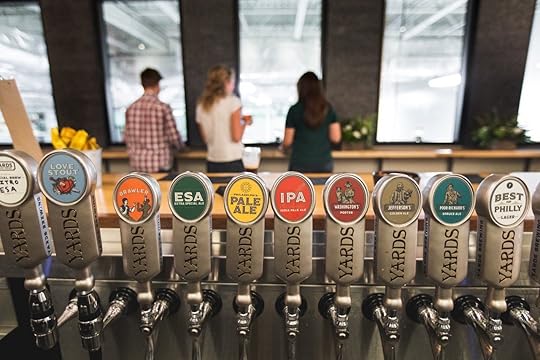
There’s no doubt that Philadelphia is a beer city. There are microbreweries and craft beer bars in every nook and cranny of Philadelphia neighborhoods, and some corner stores pack fridges with better selections than proper liquor stores. Sure, the dive bars have plenty of PBRs, but they also carry rare seasonal beers on a rotating craft list. But it’s the Philadelphia breweries that really shine when it comes to Philly beer.
There’s a long history to it all, this being Philadelphia. Over the course of the 19th century, Philadelphia and the surrounding area became a hub for brewers. At its peak, there were more than 90 Philadelphia breweries in operation. Philadelphians spent many decades beer-drunk and merry until Prohibition brought the industry to a grinding halt. It took decades for Philadelphia breweries to rebound after the Constitution was amended to once again allow alcohol.
In 1985, Dock Street Brewery opened and Philadelphia got its first craft brewery since Prohibition. Over time, the number of Philadelphia breweries grew just as the number of breweries in the United States grew. Today, the craft beer scene in Philadelphia is one of the most diverse and exciting in the country, not to mention some of the best restaurants in the country, too. There is a stunning variety of Philadelphia breweries and styles crafted inside them, from classic lagers to the latest innovations in the craft beer scene. It maintains its roots with nearby Yuengling — America’s oldest operating brewery — while also continuing to expand its mom-and-pop-type offerings seemingly every week.
Here are 15 of the best breweries in the city to start off a proper Philadelphia craft beer sampling. Consider this list a jumping-off point, a dipping of the toe into Philadelphia breweries — and when you’re done checking out these breweries we also recommend a trip to Reading Terminal Market, too. You’ll need somewhere to stay when you get here — a day trip just isn’t enough time to experience Philadelphia breweries, or the city in the general — so check out these roundups of the best hotels in Philly and Philly airbnbs while you’re at it.
1. Wissahickon Brewery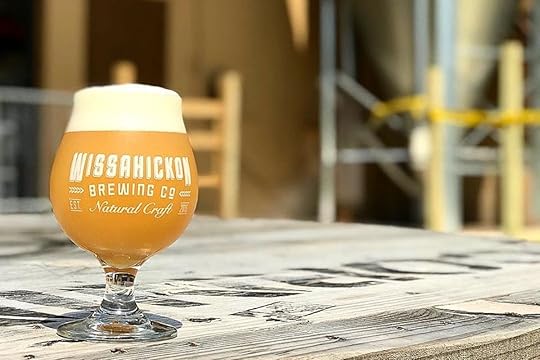
Photo: Wissahickon Brewing Company/Facebook
A bit outside of the city center, Philly turns a bit greener, a bit quieter, and a lot more in tune with the trends. The chill, friendly folks over at Wissahickon Brewery fit right into this scene. The space is packed on weekends with not only groups of hearty beer drinkers but also their babies, parents, and pets. It’s a welcoming brewery, the type you could go to by yourself and leave with a group of new friends.
The cozy vibe here is a big part of how Wissahickon operates. The brewery is family-owned and -operated, as well as community-oriented. There are weekly events, like yoga and quizzo, geared toward getting people together, and the haphazard way tables and benches are arranged encourages grouping up. A giant projector screen drops down for big games, and, of course, Wissahickon offers a nice rotating selection of drafts and brings around a food truck to feed the masses. It’s well worth a visit after a hike in nearby Wissahickon Park, even if that means rolling in with a dirty dog, an angry child, or both.
Where: 3705 W School House Ln, Philadelphia, PA 19129
2. Manayunk Brewing CompanyManayunk Brewing Company brews a truly astonishing 600 small-batch beers. Located on the Schuylkill River, Manayunk also one of the largest outdoor dining areas of any brewery in the city. The restaurant serves pizza and sushi, and when it starts to get warmer out the brewery even offers kayak tours of the river.
Where: 4120 Main St., Philadelphia, PA 19127
3. Triple Bottom BrewingTriple Bottom Brewing connects beer with a social mission: The brewery Certified B Corp and its also member of Crafted for All, an organization which helps breweries implement inclusive and equitable business practices. In fact, its name refers to its “triple bottom line”: beer, people, and planet. Triple Bottom brews a variety of beers from hazy IPAs to juicy pale ales, and crisp pilsners.
Where: 915 Spring Garden Street Philadelphia, PA 19123
4. Philadelphia Brewing CompanyPhiladelphia Brewing Company specializes in about a dozen different types of lagers and ales, which it says are a marriage between old school style beers and modern brewing techniques. This brewery is also the oldest and largest of its kind in Philadelphia. And it’s invested in its community: In the past, the brewery has raised thousands of dollars for local causes, including animal welfare.
Where: 2440 Frankford Avenue Philadelphia, PA, 19125
5. Source Urban BreweryLocated in the Fishtown neighborhood, Source Urban Brewery serves elaborate snacks like a ice cream sundaes and charcuterie boards. Beers include a peachy Belgian wheat and a sour IPA infused with blackberry and raspberry.
Where: 1101 Frankford Ave, Philadelphia, PA 19125
6. Dock Street Brewery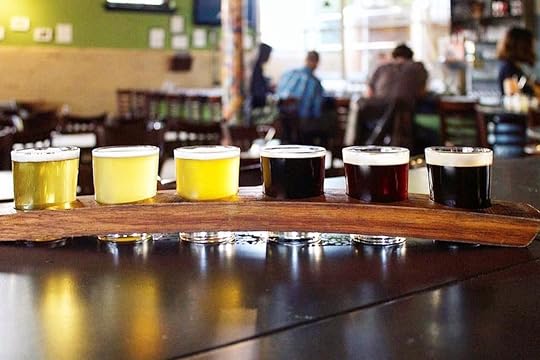
Photo: Dock Street Brewery/Facebook
Philly might be one of the country’s best beer cities now, but it wasn’t always that way. It became what it is today because of places like Dock Street Brewery, the first microbrewery to open its doors back in 1985. Here, the brewing experience shows.
The original location in West Philly is on the first floor of a firehouse, but the years have been good to Dock Street. It has since expanded into the space next door with the Dock Street Cannery and Tasting lounge, a hip new craft cocktail bar with inventive food. More recently, it opened up a new location in the Point Breeze neighborhood. Both of the brewery locations offer up delicious brews for a whopping $3.50 during happy hour.
Where: Original location at 701 S 50th St, Philadelphia, PA 19143 and Point Breeze location at 2118 Washington Ave, Philadelphia, PA 19146
7. Second District Brewpub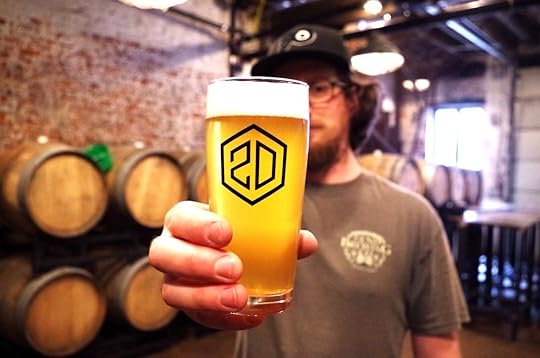
Photo: Second District Brewing/Facebook
The area surrounding Passyunk Avenue in South Philly has transformed into one of the best places to eat and drink in the city. It’s where the young chefs go, opening up restaurants that quickly gain cult-like followings for things like new takes on bao buns or expertly done renditions of the classic Jewish bakery. It’s also where some folks are brewing some very good beer.
Enter Second District Brewpub. Sharing the industrial-style interior found in many of the country’s breweries, Second District somehow maintains a cozier vibe. It’s the kind of place where you go for a beer and stay for seven (ideally lower percentage ones as the night goes on). It doesn’t hurt that Second District also offers up a great food menu, part of which is vegan and vegetarian.
Where: 1939 S Bancroft St, Philadelphia, PA 19145
8. Victory Brewery PhiladelphiaThe Victory Brewing Company is expansive: At the historic 1776 Benjamin Franklin Parkway location, there are two indoor bars, an outdoor bar, outdoor seating on street level, and a rooftop patio. The brewery pours its own lineup of beers, as well from sister brands Southern Tier Brewing Company, Sixpoint Brewing Company, and Bold Rock Hard Cider. As for food, you’ll find pub-style classics here, from giant pretzels to loaded fries.
Where: 1776 Benjamin Franklin Parkway Philadelphia, PA 19103
9. Mainstay Independent Brewing CompanyLocated inside Craft Hall, Mainstay Independent Brewing Company offers a range of beers from a spic Hefe Wiezen to a “dangerously drinkable” dry hopped extra pale ale. With quieter lounge areas, a playground for kids, and a more lively open seating, Craft Hall serves beer from Mainstay Independent and food from Lost Bread Company.
Where: 901 N Delaware Ave, Philadelphia, PA 19123
10. Yards Brewing Company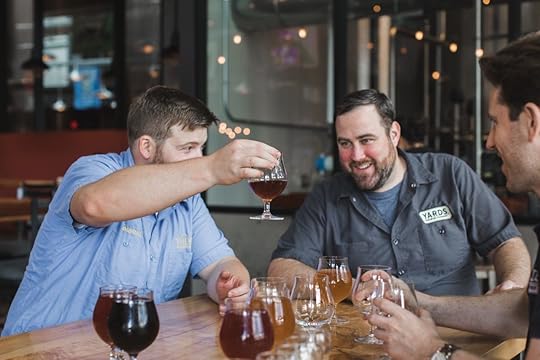
Photo: Yards Brewing Co./Facebook
Yards is the brewery that even the mildest of beer nerds have likely heard of. This is certainly not a microbrewery, but that doesn’t take away from the fact that Yards make a damn good beer. Yards is the largest brewery in Philadelphia and was started by homebrewers in a city garage in 1994. It’s earned the respect of locals thanks to choosing to remain in city limits when its success meant it could have easily moved to a larger location somewhere in the suburbs.
The brewery’s latest expansion landed the brewery in a giant hall in the middle of Northern Liberties. The inside is a huge, open room stuffed with long communal tables, making it the best brewery to go to with a large group. It has the feel of a German biergarten but with an upscale menu. Pricey food aside, this is a party spot. The nights are fun and loud, likely a product of happy guests consuming large quantities of the latest beer options. If you’re more interested in the history and science side, Yards also offers tours twice a day for $10 per person.
Where: 500 Spring Garden St, Philadelphia, PA 19123
11. Love City Brewery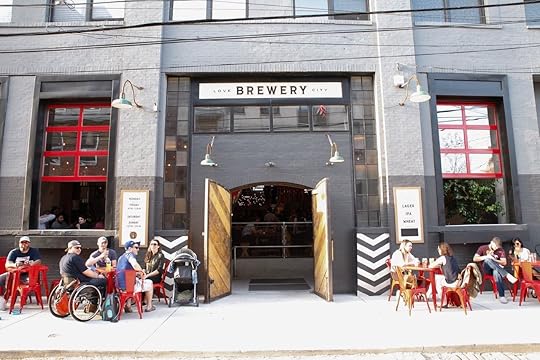
Photo: Love City Brewing Company/Facebook
The story of Love City Brewery is, perhaps unsurprisingly, a love story. Owners Kevin and Melissa started brewing together before they married, and then continued brewing together at their very own brewery. This is the spot to bring your friends who still think Philly is lame. The roughly 6,000-square-foot, newly opened brewpub is decked out in all the Insta-worthy decor your millennial friends can handle. Ask the bartender to pour one of the unpretentious beers into a glass, set it next to the small potted cactus, use the blue-tiled bar as a backdrop, and voila, you’re an influencer.
This doesn’t take away from the delicious beer, though. The classic Love City Lager is one of the most popular brews served in Philly. It makes an appearance on quite a few of the city’s taps, but none of those bars can boast serving it fewer than 100 feet from where it’s made.
Where: 1023 Hamilton St, Philadelphia, PA 19123
12. Evil Genius Beer Company
Photo: Evil Genius Beer Company/Facebook
Evil Genius has a bit of a cult following. It’s a spot for people in the know, and it’s one that is well worth getting to know. The best beers at Evil Genius are fun and funky, with twists of hops and dashes of citrus, herbs, or florals. Making your way through the extensive, rotating beer list is a little adventure in and of itself. The first sip is generally a bit of a surprise, maybe even a shock, but it leaves you curious. So you take another, and another, and before you know it you’ve completed this thrilling journey all the way to an empty glass. Then repeat.
Set in the heart of Fishtown, the space makes for a pretty standard brewpub, which is charming in its own right. The real hangout in the summer is the tucked aside outdoor space housing scattered tables lit by the gentle glow of overhead string lights.
Where: 1727 N Front St, Philadelphia, PA 19122
13. Crime and Punishment Brewing CompanyCrime and Punishment Brewing Company is Russia-inspired, from the labels to the food served at its brewpub. The brewery has a deep attachment to its neighborhood, Brewerytown, too — it sometimes sponsors little league teams or hosts local art shows.
Where: 2711 W Girard Ave Philadelphia, PA 19130
14. Separatist South PhillyThe highlight of Separatist South Philly is its so-called Blendery, where the brewers practice something they call “rustic brewing.” Here, they create spontaneously fermented ales, sometimes using foraged ingredients. Separatist beers have in the past been brewed with Czech hops or aged in French oak.
Where: 1646 S 12th St, Philadelphia, PA 19148
15. Chestnut Hill Brewing CompanyThere are two features to the Chestnut Hill Brewing Company: The first is the outdoor beer garden inside the Market at the Fareway, in Germantown. Both family-friendly and dog-friendly, the beer garden offers bites both from the brewery and outside vendors. The other is the Chestnut Hill Brewing Company taproom, which serves vegan pub fare as well as wine and cocktails alongside Chestnut Hill beer.
Where: 8221 Germantown Ave, Philadelphia, PA 19118 
This Adults-Only Cancun Hotel Is the Perfect Place For Solo Travelers To Slow Down
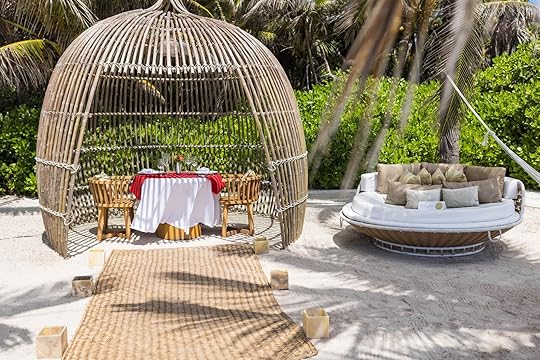
Solo travel is my first love. But after becoming a parent, I naturally started to travel in a pack with my husband, two young children, and mom often in tow. In these situations, I’m the family travel planner. After a summer of traipsing from destination to destination with the whole family, I returned home from our epic adventures exhausted, needing a vacation after our vacation.
TRS Yucatan Hotel, a luxury adults-only resort in Riviera Maya, Mexico, was the solution. I found a sweet spot on my calendar between the last dregs of summer and the first day of school for my kids. And while I was a bit nervous about staying alone at an all-inclusive resort popular with honeymooners, it turned out this was exactly the solo experience that I needed.
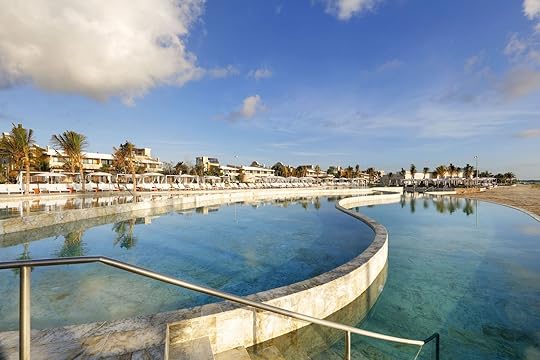
Photo: TRS Yucatan Hotel
Located about a 90-minute drive from Cancun International Airport, the TRS Yucatan Hotel is a kid-free oasis within the Grand Palladium Hotels consortium made up of White Sand Resort & Spa, Colonial Resort & Spa, and Kantenah Resort & Spa. TRS is a resort within a resort and offers 454 suites with 24-hour room service and adults-only pools that overlook jaw-dropping views of the Caribbean Sea.
Within minutes of arriving, TRS staff relieved me of my bags and ushered me out of the sweltering heat and into the cool lobby. At the check-in desk, I was offered a warm towel to clean my hands and a cool glass of sparkling wine as a welcome.
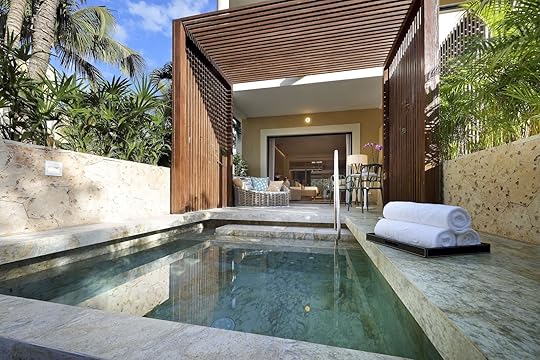
Photo: TRS Yucatan Hotel
After check-in, a chauffeured golf cart transported me to my villa, where the assigned butler greeted me. I stayed in the junior suite garden view room with two full-sized beds, a sofa, and a coffee table. The room was cozy, decorated in oatmeal tones with teal and gold accents. Each morning, I enjoyed a strong cup of coffee while sitting on the terrace balcony overlooking a mangrove forest, listening to the ocean crashing onto the nearby beach.
The peace I found was exactly what I needed after stacked family vacations.
We hope you love the stays we recommend! Just so you know, Matador may collect a small commission from the links on this page if you decide to book a stay.
Food options at TRS Yucatan HotelFive restaurants offer a la carte menu options, and six bars serve up bottomless libations. Although Grand Palladium Hotel guests cannot access the adults-only offerings, TRS guests have access to all the Grand Palladium’s 21 restaurants.
Breakfast: Caprichio is an a la carte breakfast and lunch restaurant that’s set up so you can grab a quick bite. You can order a full breakfast or lunch from the menu if time is not an issue. I nibbled on mini fruit tarts and cold meats and drank freshly squeezed grapefruit juice as a saxophonist serenaded the diners.
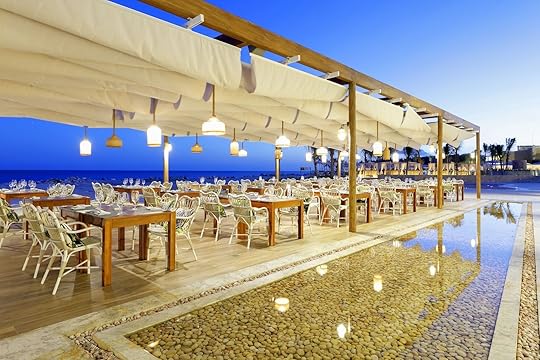
Photo: TRS Yucatan Hotel
Lunch: The Ibiza-inspired Helios is a beachfront bistro that serves breakfast, lunch, and dinner. The a la carte restaurant is next to the adults-only infinity pool and has both outdoor and indoor seating. I grabbed a taco and enjoyed a mimosa while waiting for my cooking and mixology class to begin.
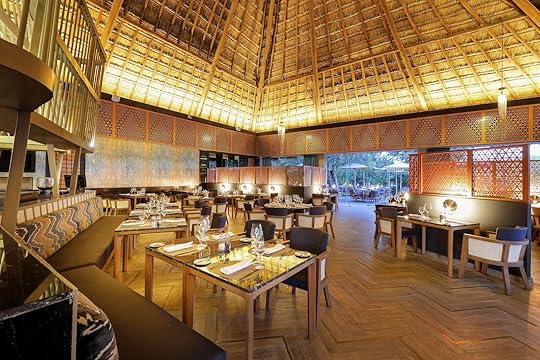
Photo: TRS Yucatan Hotel
Dinner: I enjoyed a stick-to-your-ribs, multi-course dinner at El Gaucho on my last night at the TRS. I ate my fill at this Argentinian restaurant, sinking my teeth into a beef creole turnover, rib-eye steak, grilled vegetables, and lemon pie.
What to do as a solo traveler at TRS Yucatan HotelWhile eating is understandably paramount at many all-inclusive resorts, TRS also has a trove of activities for solo travelers.
One highlight is the pool bike class. The class title is befitting, but for some reason, I was unclear about what I signed up for until it got underway. As the name suggests, it’s a spin class where the bikes are submerged in the pool, and a very energetic teacher took me and the rest of the class through paces of cycling, dancing, and splashing about to the music.
On the other end of the activity spectrum, there are a few cooking and mixology classes offered on the resort. I opted for the Mixology and Mexican cooking course, where I created and sipped on mezcal-infused concoctions while learning the art of tortilla making.

Photo: Tykesha Burton
The Chic Cabaret & Restaurant is an experience not to be missed. For this upscale event, I donned my best dress and heels. Savory dishes and drinks were served throughout the three-hour dinner show. The group of uber-talented singers and dancers took us on a chronological music show, using American pop hits during the performance’s first half. While I enjoyed singing along to the English tunes, the troupe’s Celia Cruz and Gloria Estefan’s covers stoked my nostalgia and transported me back to my childhood growing up in Miami.
I could not leave the resort without spending a day at the Zentropia Palladium Spa & Wellness. I took a liking to the hydrotherapy circuit, which employs the alternating use of hot and cold water to decrease inflammation and pain while improving mood. I oscillated between a sauna, cold plunge pool, and lazy river twice before being escorted into the spa, where I had a transformative 50-minute massage that left me relaxed, sated, and reluctant to ever return home. 
10,000 Crocs and the World’s Only Black Wallaroos: Wildlife in Kakadu National Park
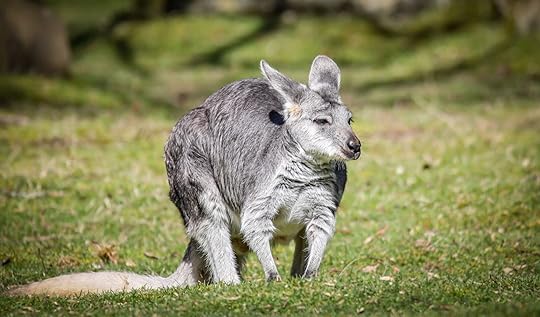
With massive crocodiles, hopping wallabies, towering termite mounds that can be nearly 20 feet tall, and enormous bats, any wildlife lover will adore a trip to Kakadu National Park in the Top End of Australia’s Northern Territory.
Touring the park with a knowledgeable local guide can be an excellent introduction to the park and an opportunity to learn about its wildlife, environment, culture, and how to enjoy the area, which is on Aboriginal land. Though Kakadu National Park is beautiful, it can also be deadly, and guides can show visitors how to take proper precautions to avoid running into trouble with crocodiles, venomous snakes, heat, and rough terrain (among a variety of other concerns).
When to visit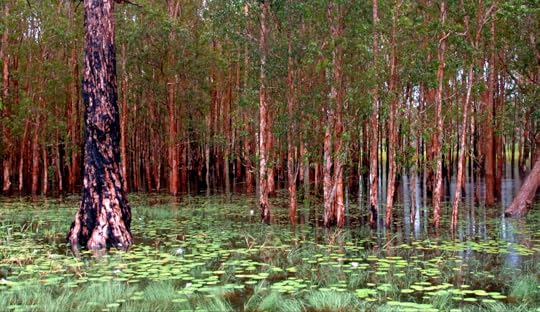
Wet season in Kakadu. Photo: Kakadu National Park/Parks Australia
Kakadu National Park’s weather is characterized by two major seasons: the wet “tropical summer” and the dry season. The dry season is between May and October and is a popular time for visiting Kakadu since most of the park’s sites are typically open during that time.
The tropical summer season, which runs from November to April, brings fewer visitors but is a time of extreme weather, including powerful lightning storms and massive flooding. The unpredictable weather means that many areas of the park may be sporadically closed throughout those months – though some spots are open year-round regardless of the weather.
While the park is largely known for these two seasons, the park’s Aboriginal owners acknowledge six seasons based on traditional land uses and weather. For example, Bangkerreng, which occurs in April, is known as “knock ‘em down” season, as strong April winds can bend the park’s speargrass so it appears to be flat.
How to get to Kakadu National Park
Darwin and Katherine are the two primary gateways to the park. Since the park is so large (around 7,700 square miles), consider which areas you would like to visit to determine the best way to approach it. Visitors will need a vehicle of some type since the park is so large.
Joining a bus or 4WD tour is an easy way to leave the difficult and sometimes treacherous driving to a professional. Visitors who choose to drive should learn about potential weather and road conditions and be well-prepared with water, snacks, and more before embarking on a self-drive adventure.
Camping and lodging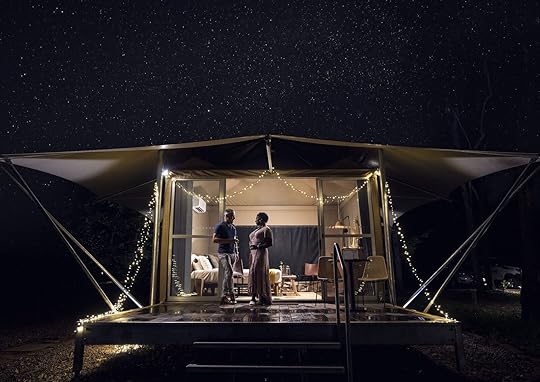
Photo: Australia’s Northern Territory
Several accommodation options are available in and near Kakadu National Park, from basic campsites to lodges and resorts. Camping options range from basic bush-style sites with simple vault toilets to sites with showers, toilets, fire pits, and picnic tables. Commercial operators also run several campgrounds featuring amenities like restaurants, shops, and even swimming pools.
Guests who prefer hotels should check out Mercure Kakadu Crocodile Hotel (the only full-service hotel in the park), Hawk Dreaming Wilderness Lodge (which offers all-inclusive cultural tours) and Aboriginal-owned Anbinik Kakadu, with bungalows and cabins. Cooinda Lodge Kakadu also has brand new glamping-style options, with raised safari tents with glass doors — perfect for visitors concerned about getting a little too close to Australia’s famously large crawling critters.
There are also plenty of hotels near the park boundaries, including the luxurious Bamurru Plains, styled after an African safari park.
Costs and feesVisitors need to purchase a park pass; the cost varies by season, visitor age, and residency. Costs range from $20 AUS for children under age 15 to $100 AUS for a week-long family pass.
Safety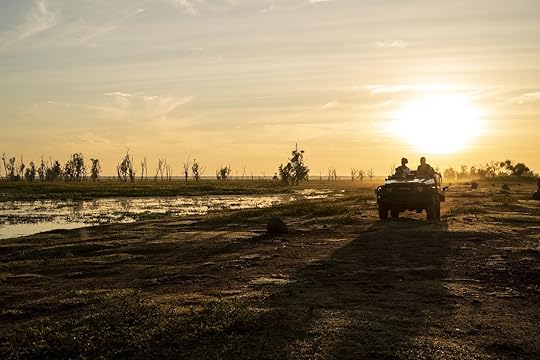
Photo: Australia’s Northern Territory
Any visit to Kakadu National Park is an unforgettable adventure, but taking proper safety precautions is important since there are some unique dangers.
One of these dangers is wildlife, so be alert of your surroundings and know about the park’s many dangerous animals, including venomous snakes, buffalos, and pigs — not to mention the 10,000 crocodiles that live within the park boundaries. They can be present in any body of water, even if you can’t see them. Read up on crocodile safety and follow the “CrocWise” safety practices. If you’re visiting in summer, heat can be a massive concern as desert temperatures can reach the high 90 degrees F in November. And visitors planning on driving should be very aware of road concerns like potholes, mud, and more.
Wildlife in Kakadu National Park
There’s a healthy population of frill-necked lizards in the park, usually hanging out in trees. Photo: kkaplin/Shutterstock
To view wildlife in Kakadu National Park, consider signing up for one of the many tour options, from bus and walking trips to cultural experiences and multi-day adventures. The park also offers an array of seasonal guided activities during which visitors can learn from an Aboriginal Bininj or Mungguy guide and explore the park under their expertise. And several tour companies, such as G Adventures, are licensed to lead activities in the park for travelers visiting the area on part of a larger trip through Australia.
Walks and guided events should be booked in advance online, especially during the dry season. Most activities are seasonal, running roughly May to October.
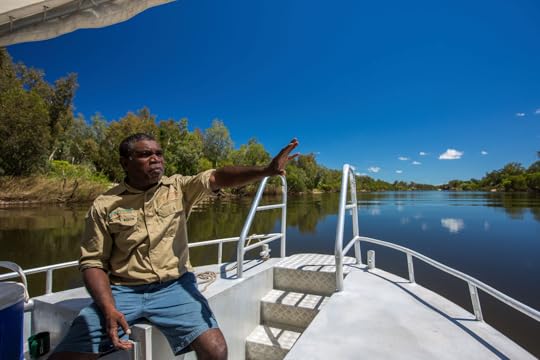
Guluyambi cultural cruises travel along the park’s East Alligator River. Photo: Kakadu National Park/Parks Australia
Wildlife tend to avoid being very active in the heat of the day, so mornings and evenings can be good times to spot them. Patience may be required, and if you’re looking for animals near watering holes, you may need to sit and watch for a while before you notice any activity. It’s best to be quiet when you’re looking for wildlife, and having a pair of binoculars handy can make the process more fun. The park website has a page with tips on spotting the various species.
Crocodiles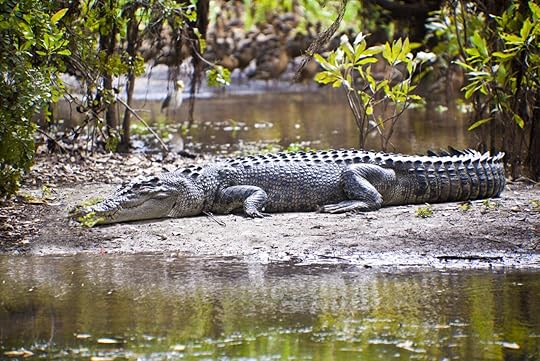
Photo: GTS Productions/Shutterstock
Crocodile watching is one of the top reasons people venture out to Kakadu National Park as it has both freshwater and saltwater crocodiles. They are beautiful and enormous — saltwater crocodiles can weigh over 2,200 pounds — but also very dangerous, so going on a tour is a great way to see them safely.
Guests can venture out on a Yellow Water Cruise to see crocodiles and other animals sunbathing on the banks or swimming in the water. To view the crocs from land, one of the best viewpoints is from an elevated viewing platform, as they’re in the highest (and safest) points to look out on croc habitats. The park’s Yellow Water Billabong has a seasonal elevated viewing platform, as does Cahills Crossing.
Agile wallabies
Photo: feathercollector/Shutterstock
These bountiful hoppers are in many locations in Kakadu National Park, so the best way to see them is to keep an eye out while exploring the park. Agile wallabies can be about 2.5 feet tall with an equally long tail (they’re a member of the kangaroo family, called macropodidae).
Keep an eye out around roads and campgrounds, especially as they often move through these areas as singles and in groups. Females may even have babies in their pouches as they keep them there for up to eight months after birth.
Birds
Photo: Cezary Wojtkowski/Shutterstock
Since one-third of Australia’s bird species live in the park, birding is a very popular activity. Visitors should bring binoculars and consider signing up for a bird-focused tour. Birders may be especially eager to participate in Kakadu Bird Week (usually in early October), which offers opportunities to view an array of species through several activities, from boat cruises to walks. Especially easy species to recognize include purple-and-orange azure kingfishers (called kookaburras) and yellow-and-greenish rainbow bee eaters.
Flying foxes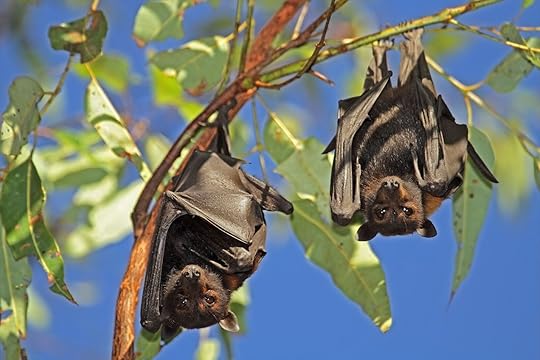
Photo: EcoPrint/Shutterstock
Keep an eye on the sky around dusk when flying foxes emerge to seek food for the night. These large bats spend their evenings feeding on nectar and fruit and spend their days roosting in mangroves and trees. Both little red and black flying foxes live throughout the park, so it’s possible to see either species at any time while visiting.
Wallaroos
Photo: /Shutterstock
Unsurprisingly, a wallaroo looks much like both a wallaby and a kangaroo. But it’s not a mixed breed between the two – it’s an entirely different genus. While in Kakadu, keep an eye out for three different wallaroo species in the park: common, black, and antilopine. Look along rocky hills for the common wallaroo, though they are hard to spot. Antilopine wallaroos are usually grazing in grassy areas, and black wallaroos are most commonly seen by Burrungkuy (Nourlangie) and while hiking the Barrk Marlam walk. Wallaroos are a lot bigger than wallabies, which usually top out around 20 pounds.
Termites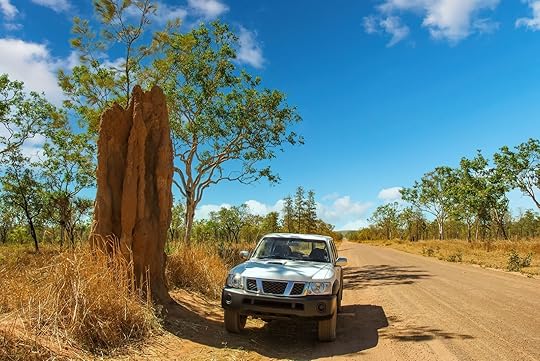
Photo: 365 Focus Photography/Shutterstock
Don’t rule out seeing termites – their homes can be some of the most impressive formations in the park at nearly 20 feet tall. The insect-constructed structures (built from mud and termite spit) house millions of termites and can last up to 60 years. To see these impressive structures, take a look along Maguk Road by Mary River. 
The Best Amazon Early Access Sale Deals on Travel Gear This Year
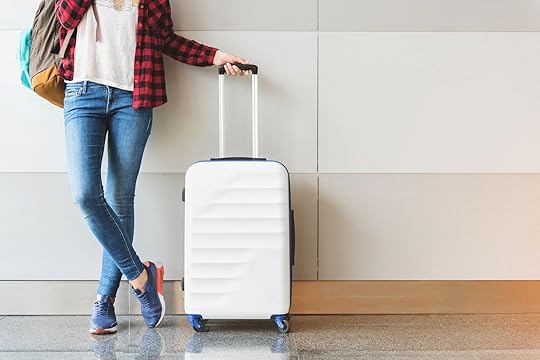
For months, there have been rumors of a second Amazon Prime Day. Here’s a little secret — it’s coming. Sort of. Well, not actually — but there is a massive sale coming. And it’s basically Amazon Prime Day, but with a different name, and significantly less hype. But the deals are shaping up to be epic at what’s been dubbed the Amazon Early Access Sale, taking place October 11 and 12. If you’re an Amazon Prime member, you can save big on all types of stuff, including travel-related accessories (and books, because traveling without a good book is just plain wrong). If not, you can sign up here.
This second iteration of Amazon’s epic sale is an allude to Prime members being able to snag deals long before the typical Black Friday holiday shopping kickoff. Here are the best travel gear deals at the Amazon Early Access Sale 2022.
We hope you love the products we recommend. Just so you know, Matador may collect a small commission from the links on this page if you decide to purchase. Listed prices are accurate as of the time of publication.
Set of eight packing cubes: $36.55 (save $2.62) [image error] [image error]Stylish and practical, this eight-piece set is perfect for protecting your belongings from being thrown around your suitcase and from any potential spills or leaks. The sets come in 10 different colors and patterns, including a modern animal-style print — which we don’t hate. The cubes can be used together and fit seamlessly into most carry-ons, duffles, or backpacks. Or, if heading on a short weekend getaway, you can grab a couple and neatly store shoes, toiletries, and cables.Pack of three cosmetic bags: $14.74 (save $2.25) [image error] [image error]In three different sizes and with five different fun color combinations to choose from, this pack of cosmetic bags is a bargain coming in under $15. They have been designed to be super durable with a waterproof PU leather fabric which is very easy to clean. Although these are marketed for cosmetics, they are multifunctional. Use for storing other toiletries or perhaps hair accessories — because we are all guilty of losing bobby pins on vacation, right?Passport and document holder: $22.99 (save $2) [image error] [image error]With a large capacity, this passport holder was designed for a family and can fit up to four passports. However, if you’re looking for an organizer for personal use, it’s a great product for storing important travel documents, cards, and cash. It also has a uber-important layer of security with its anti-theft blocking material, meaning your personal information, passport, and bank cards are secure from theft.Laptop travel backpack: $29.99 (save $16) [image error] [image error]This backpack is a staple. It has a secure separate compartment that can hold up to a 15.6-inch laptop. The second section is roomy, ideal for cables and other technological accessories. But the main selling point is its built-in USB charger and its anti-identity theft secret pocket. A luggage strap makes this a breeze to connect to an upright handle on a suitcase and users rave about the airflow design, which makes for a super comfortable carry.Compact neck pillow: $39.97 (save $20) [image error] [image error]You may think paying close to $40 for a neck pillow sounds like an airport price, but consider this an investment. With a massive 33 percent off and over 20,000 reviews on Amazon, the pillow is one of the highest-rated available. It comes in four different sizes and 13 different colors and patterns. The smallest is perfect for children aged three to seven, medium for those eight to 12, and large and extra-large for adult travelers. With adjustable chin support, the pillow guarantees that your head will not fall forward when you nod off.Essential duffle back with a compartment for shoes: $19.99 (save $9) [image error] [image error]Essential — 100 percent. For weekends away or longer trips for a savvy packer, this duffel is lightweight, durable, and waterproof. It comes in three different sizes (40L, 65L, and 115L) and a whopping 27 different colors. The brightly colored fun patterned options guarantee that you’ll never lose your luggage again. It also compactly folds down when empty, so it’s easy to store.Three piece spinner suitcase set: $161.49 (save $138.50) [image error] [image error]This three-piece spinner set includes a 20-inch, 24-inch, and 28-inch impact-resistant hard-shelled suitcases with multidirectional smooth 360-degree wheels. The combo is lightweight and all are equipt with a TSA combination lock for security and peace of mind. There are also 17 color combinations to choose from.Waterproof travel shoe bags: $14.99 (save $7) [image error] [image error]Ideal for keen trail runners, hikers or any outdoor enthusiast who wants to protect their belongings and luggage from muddy shoes or boots, these travel shoe bags are a great investment. For under $15, you get a pack for four. They come in two different sizes and are constructed from waterproof material. Previous customers rave about their multifunctional use stating not only are they a lifesaver after a long hike, but they can double up as a wash bag.LifeStraw Go 22 oz water filter bottle for travel and backcountry use: $19.99 (save 50%)[image error][image error]
Filtering water on the go is a necessity both for international travel and for backpacking. This 22oz LifeStraw Go bottle solves the problem entirely — just bring this bottle, and you can drink water wherever you are. Filter from streams, taps, and more and refresh without having to worry about getting sick.
In short, the Amazon Early Access Sale is the October version of Prime Day, the e-commerce platform’s now bi-annual mega-sale. It’s a precursor to Black Friday but with better deals, where all types of items are listed at huge discounts to entice shoppers to stock up on Amazon brand gear and other items. Discounted prices are listed next to the normal price, but in a different color, noting the discount. You can only take advantage of the Amazon Early Access Sale prices during the two days in which the sale takes place. After the sale is over, prices return to normal.
Prime Day is much more well-known, and in the past has only happened once per year since 2015. It is now one of the most anticipated online retail events of the year, with items for sale across nearly everything a person could want. The company’s flagship product, books, are steeply discounted, and often even free for Prime members.
Do you need to be a Prime member to participate in the Amazon Early Access Sale ?You do, but like all good things, it’s never too late to join. Sign up for a free 30-day trial right now and shop to your heart’s content. Amazon Prime costs $15 per month or $139 per year. Once enrolled, you can take advantage of perks like free shipping, special deals, and the ability to participate in sales such as this one.
When is the Amazon Early Access Sale?The Amazon Early Access Sale 2022 runs on October 11 and 12, 2022, from midnight on the first day until 11:59 PM on the second. You can take part in the sale up until the very end, and Amazon has listed some products in advance, including AirPlay Pro Bluetooth adapters. Prime Day sales cover everything category on the site and include products from many large vendors — and pretty much everything made or sold by Amazon directly.
Prime Day typically takes place in July, though last year’s Prime Day happened in June. Rumors abound that a second Prime Day will take place later in 2022, to offer similar deals once again to Prime members.
How does the Amazon Early Access Sale work?The Amazon Early Access Sale is a simple program: As long as you’re a Prime member, you can take advantage of all the great deals on travel products and all kinds of other gear. As long as you’re logged into your Prime account, you’ll see the deals pop up automatically when you look at a product or a listing of different eligible products. Buy the product, and you automatically get the discounted price. Plus, you still get those sweet Prime perks like free shipping in just one to two days, in many cases.
What countries can participate in the Amazon Early Access Sale?Amazon has added more countries to its list of participants in Prime Day 2022. You can take part in Amazon Early Access Sale in the following countries. 
Cotopaxi’s Teca Fleece Is the Only Colorful Layering Jacket You Need, and It’s 50% Off Right Now
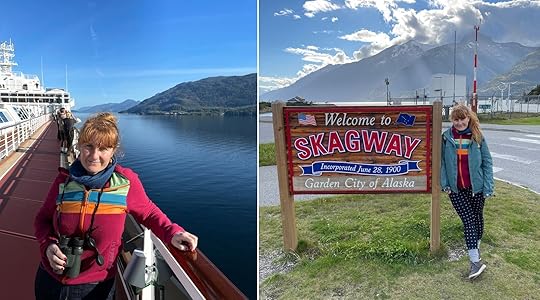
In British Columbia’s interior, the seasons seem to change with the flick of a switch. And when the sweltering August summer heat gives way to cool, crisp air and below-50 temperatures in early September, you’d better have put your running shorts away and have your socks and layers handy. This year, after a misguided clothing purge, all that was left in my closet were big woolen turtlenecks and thin cardigans, none of which were appropriate. To remedy this wardrobe crisis, I got myself a Cotopaxi fleece. Since receiving it, I’ve worn my Cotopaxi Teca fleece full-zip jacket nearly every day, taking it to rainy Alaska and unseasonably hot and always posh Vancouver and Whistler, and now I can’t see myself going anywhere without it.
We hope you love the Cotopaxi fleece we recommend! Just so you know, Matador may collect a small commission from the links on this page if you decide to make a purchase.
Cotopaxi Teca fleece full-zip jacket’s best featuresI chose this Cotopaxi fleece for three reasons: The full-zip design, the large choice of colors available, and the popularity of the product.
Go for a full-zip designLong-sleeve Cotopaxi fleeces are available in two different cuts: full-zip jackets or half-zip or half-button-down pull-overs. I picked the full-zip design so I can open it up when I feel too warm without having to take it off entirely. The full-zip makes the Teca fleece very versatile.
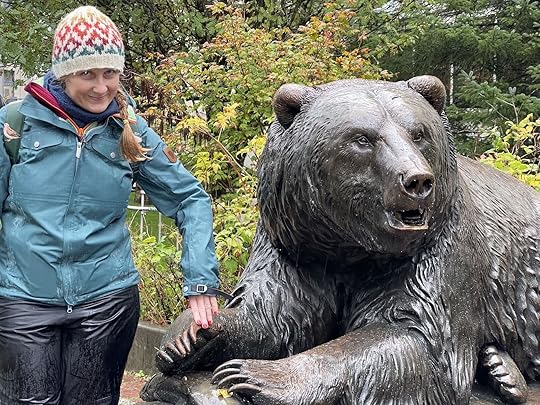
The only reason I felt like goofing around in Juneau’s pouring rain is because I felt warm in my Cotopaxi fleece that was under my Fjällräven shell.
I’ve been wearing my Teca fleece in all sorts of weather over the past month. I wore it under a leaking shell in the pouring rain in Juneau, Alaska, and it kept me dry unlike anything else I was wearing that day. Because it’s light and not bulky, I also tied it around my waist while walking around the trails in Whistler during surprisingly hot fall days and put it on when the sun set early behind the mountains and the air finally cooled. This Cotopaxi fleece is the perfect thing to keep handy and throw on when you need it, no matter your destination.
Among the designs available for Cotopaxi fleeces, you can opt for a regular or hooded version. While a hood is always welcomed when the wind picks up and the temperatures drop, I wanted to use my Cotopaxi fleece under my not-very-warm Fjällräven shell which already has a hood. If you want to combine your Cotopaxi fleece with a shell, keep this in mind.
The Teca fleece is available in every color of the rainbowThe Teca fleece comes in 12 hues (four of which are on sale 50 percent off on REI’s website). There’s something for every taste, whether you like more discreet shades or bright tones. That said, even the most mellow-looking Teca fleeces bear a pop of bright color. I’m a firm believer that vivid outdoor clothing is important for your safety when you’re out in the wild hiking, kayaking, etc. on your own. People will better remember seeing you if you were wearing a bright orange fleece and Search and Rescue will spot you a little more easily if need be.
Because I’m a lover of vibrant colors, I went for the Sorbet option — it’s a vivid shade of pink with green, blue, and orange accents in three broad stripes in the front; there’s also a touch of green inside the collar and the zip is orange. The Sorbet Teca fleece, along with three other colors, is currently on sale for $54.93 instead of $110 at REI.
The Teca fleece is one of Cotopaxi’s best-selling productsThe Teca fleece full-zip jacket is one of Cotopaxi’s top 10 selling products and if this information does not inspire enough trust for you to make a purchase, just have a look at the more than 200 reviews posted on the website and on REI. They are overwhelmingly positive, leading to a 4.5 rating out of five.
Cotopaxi’s top 10 selling products for 2022 are:
Bataan 3L Fanny packBatac 16L packFuego down hooded jacket (both women’s and men’s are on sale) Teca half-zip windbreaker (both women’s and men’s are son sale)Fuego down vest (both women’s and men’s are on sale)Teca fleece full-zip jacket (both women’s and men’s are on sale)Luzon 18L daypackTeca Calido hooded jacket (on sale for the women’s cut)Abrazo half-zip fleece jacket (both women’s and men’s are on sale)Kapai 1.5L hip packSize choice for the Cotopaxi Teca fleece full-zip jacket
Photo: Jesse Adams
Cotopaxi’s Teca fleece is true to size. I’m 5’4 and 140 pounds and chose a medium, which is a perfect fit. I’m busty, yet I’m able to have a long sleeve top underneath this Cotopaxi fleece without having any difficulties zipping it up and I never feel constricted in the chest area while wearing it. The elastic cuffs and hem fit snuggly but comfortably; it does not ride up your back or stomach and keeps you warm against drafts.
The Teca fleece comes in seven different sizes, from XXS to XXL, making this practical and fashionable jacket accessible to bodies of most shapes and sizes.
Improving on the Cotopaxi Teca fleece full-zip jacket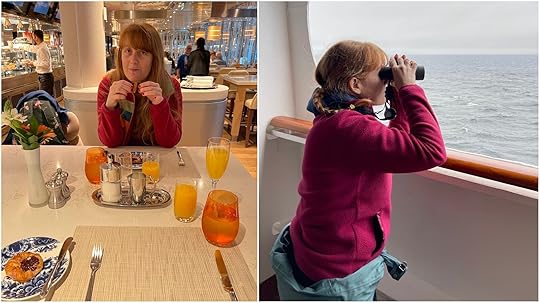
At the restaurant or watching for wildlife, the Teca fleece by Cotopaxi works for most occasions. Photo: Jesse Adams
While I wouldn’t trade my Cotopaxi fleece for any other one, there’s one thing that I constantly feel would make this product better: zipped pockets. Because it’s versatile, it can be worn on its own when there’s a chill in the air, or as a layer in changeable and cold weather. But if worn on its own, it needs more protected pockets for your keys, metro card, or any other small items you want to keep safe.
Why choose a Cotopaxi fleece over other brands?If you’re worried that your purchase will contribute to the disastrous environmental impact of fast fashion, you can rest easy. Few outdoors brands are as engaged as Cotopaxi in doing what’s right for the planet and all who live on it.
Cotopaxi is a Climate Neutral certified company that’s dedicated to using non-virgin and responsible materials to create durable products, thereby reducing waste and the company’s carbon footprint. According to Cotopaxi, 94 percent of its products “contain repurposed, recycled, or responsible materials,” and their goal is to reach 100 percent by 2025 (the Teca fleece is made with recycled and repurposed materials).
But the pledge to do good goes way beyond environmental sustainability. Cotopaxi is also extremely transparent about the people who make its products, and is committed to protect their well-being. Where your item was made and in waht conditions is listed right beside all of the product’s specs (the Teca fleece is made in China).
Cotopaxi is also committed to help those in need in the Americas by donating 1 percent of revenue to the Cotopaxi Foundation, which redistributes that money to charities fighting poverty. 
Matador Network's Blog
- Matador Network's profile
- 6 followers



